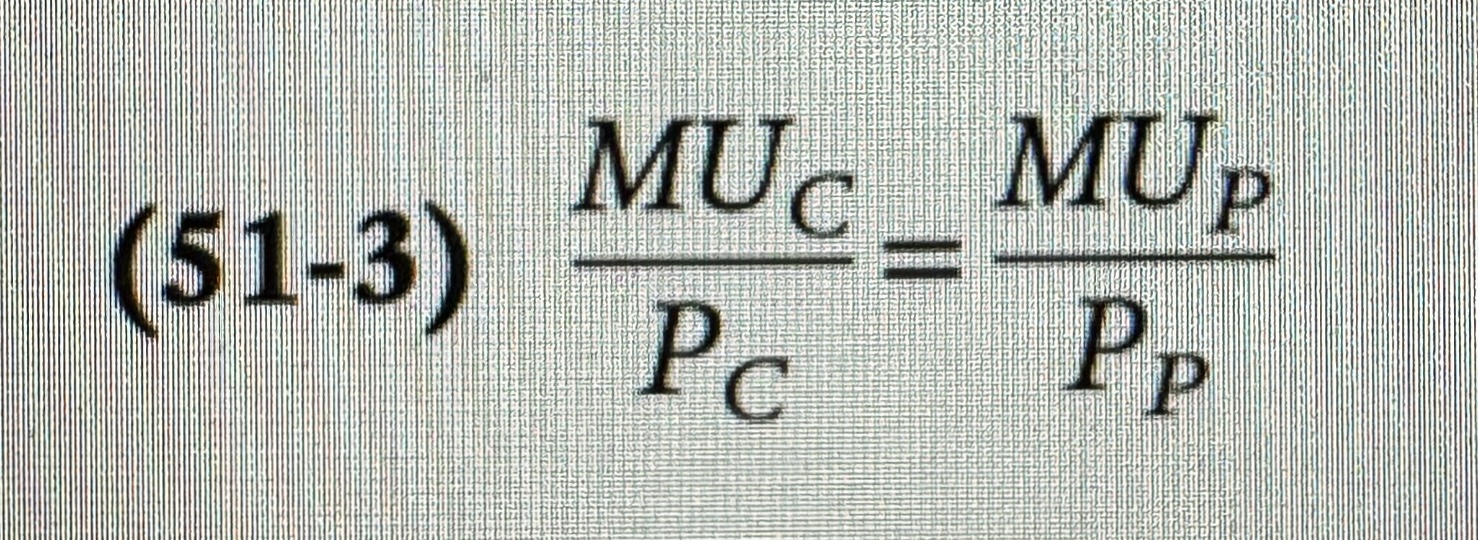Chapter 9 - Behind the Demand Curve: Consumer Choice
1/79
Earn XP
Description and Tags
Name | Mastery | Learn | Test | Matching | Spaced |
|---|
No study sessions yet.
80 Terms
The Substitution Effect
The change in the price of a good is the change in the quantity of the good demanded as the consumer substitutes the good that has become relatively cheaper for the good that has become relatively more expensive. People will often substitute for cheaper goods when the price of another goes up.
The Income Effect
A change in the price of a good is the change in the quantity of that good demanded that results from a change in the consumers purchasing power when the price of the good changes.
Price Elasticity of Demand
The ratio of the percent change in the quantity demanded to the percent change in the price as we move along the demand curve (dropping the minus sign).

% Change in Price
Ex.

% Change in Quantity Demanded
Ex.

The Midpoint Method
A technique for calculating the percent change. In this approach, we calculate changes in a variable compared with the average, or midpoint, of the initial and final values.

Perfectly Inelastic
Demand when the quantity demanded does not respond at all to the changes in price level. When demand is perfectly inelastic, the demand curve is a vertical line.
Perfectly Elastic
Demand when any price increase will cause the quantity demand to drop to zero. When demand is perfectly elastic, the demand curve is a horizontal line.
Two Extreme Cases of Price Elasticity of Demand
Ex.
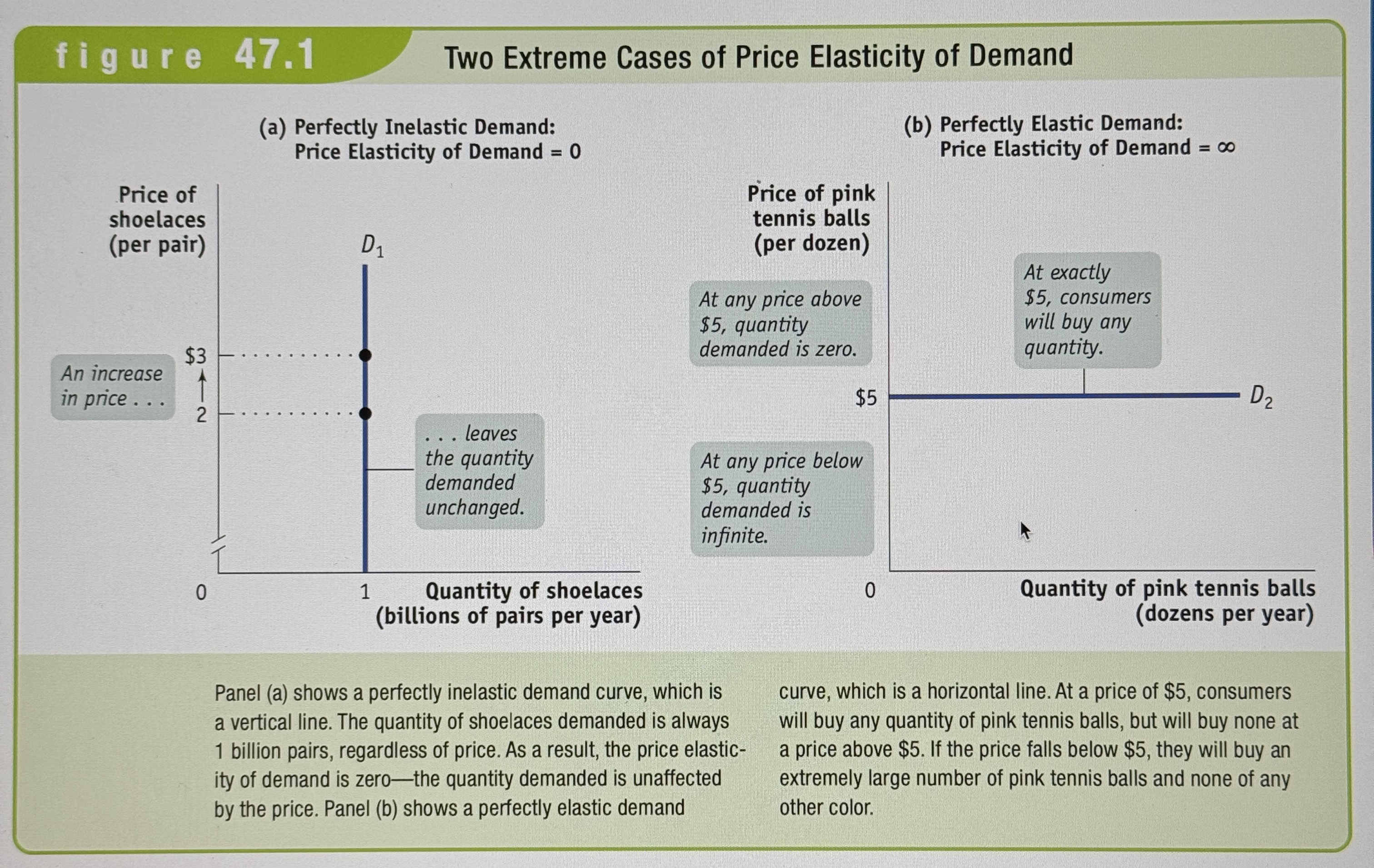
Elastic, Inelastic, and unit-elastic
Demand is elastic if the price elasticity of demand is greater than one, inelastic if the price elasticity of demand is less than one, and unit-elastic if the price elasticity of demand is exactly one.
Unit-Elastic Demand, Inelastic Demand, and Elastic Demand
Ex.
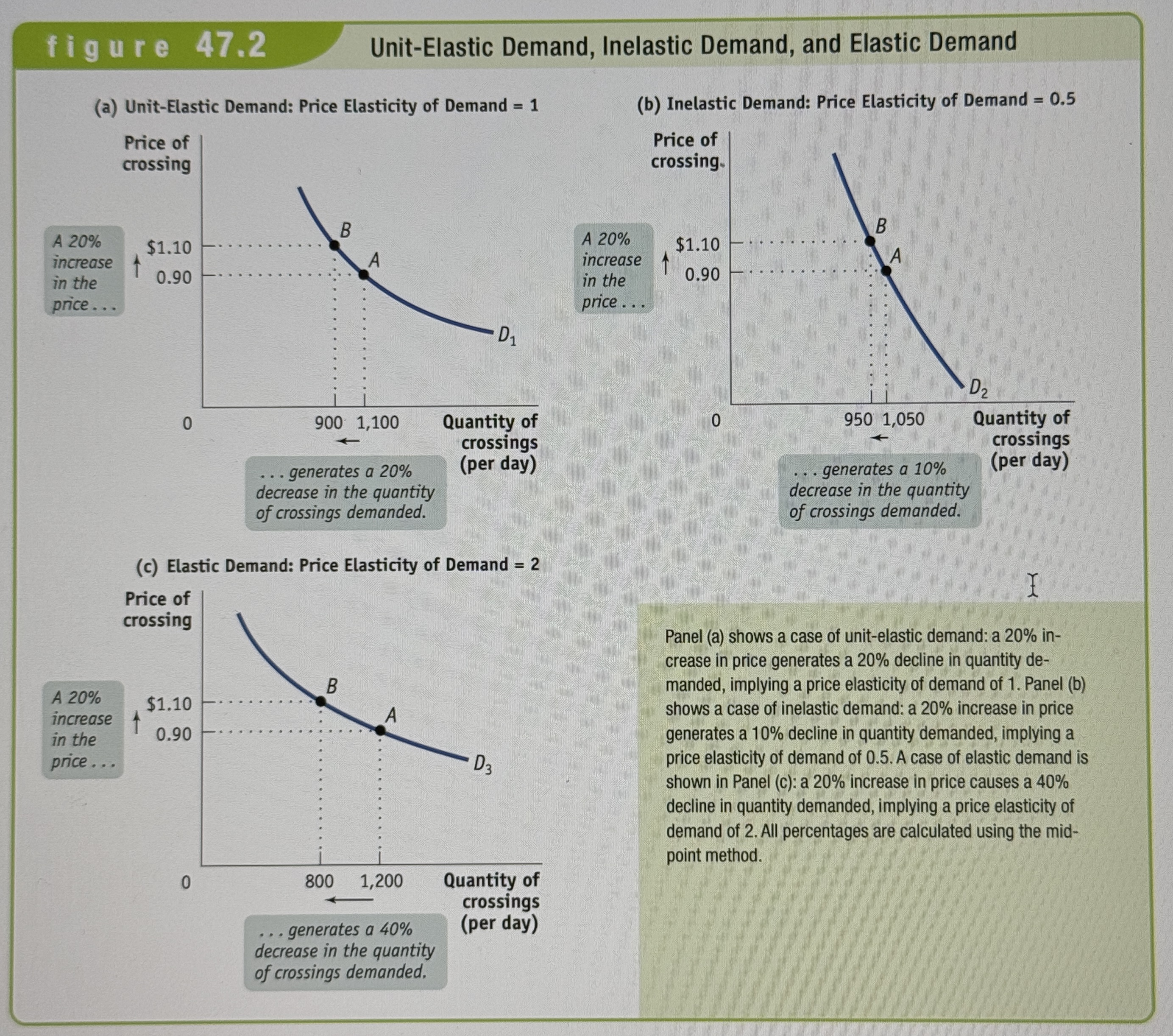
Total Revenue
The total value of sales of a good or service. It is equal to the price multiplied by the quantity sold.

Total Revenue Graph
Ex.
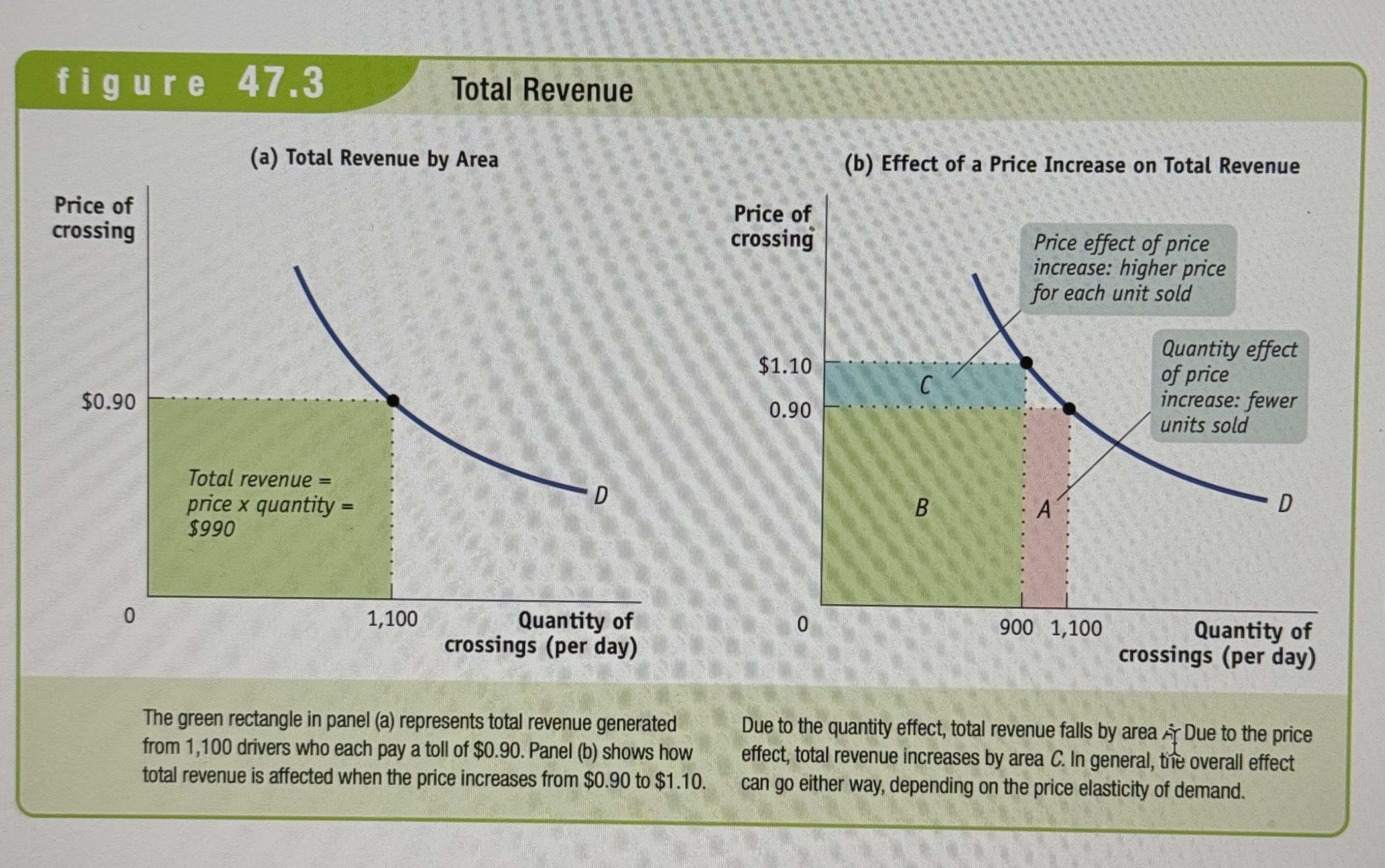
Price Elasticity of Demand and Total Revenue
Ex.
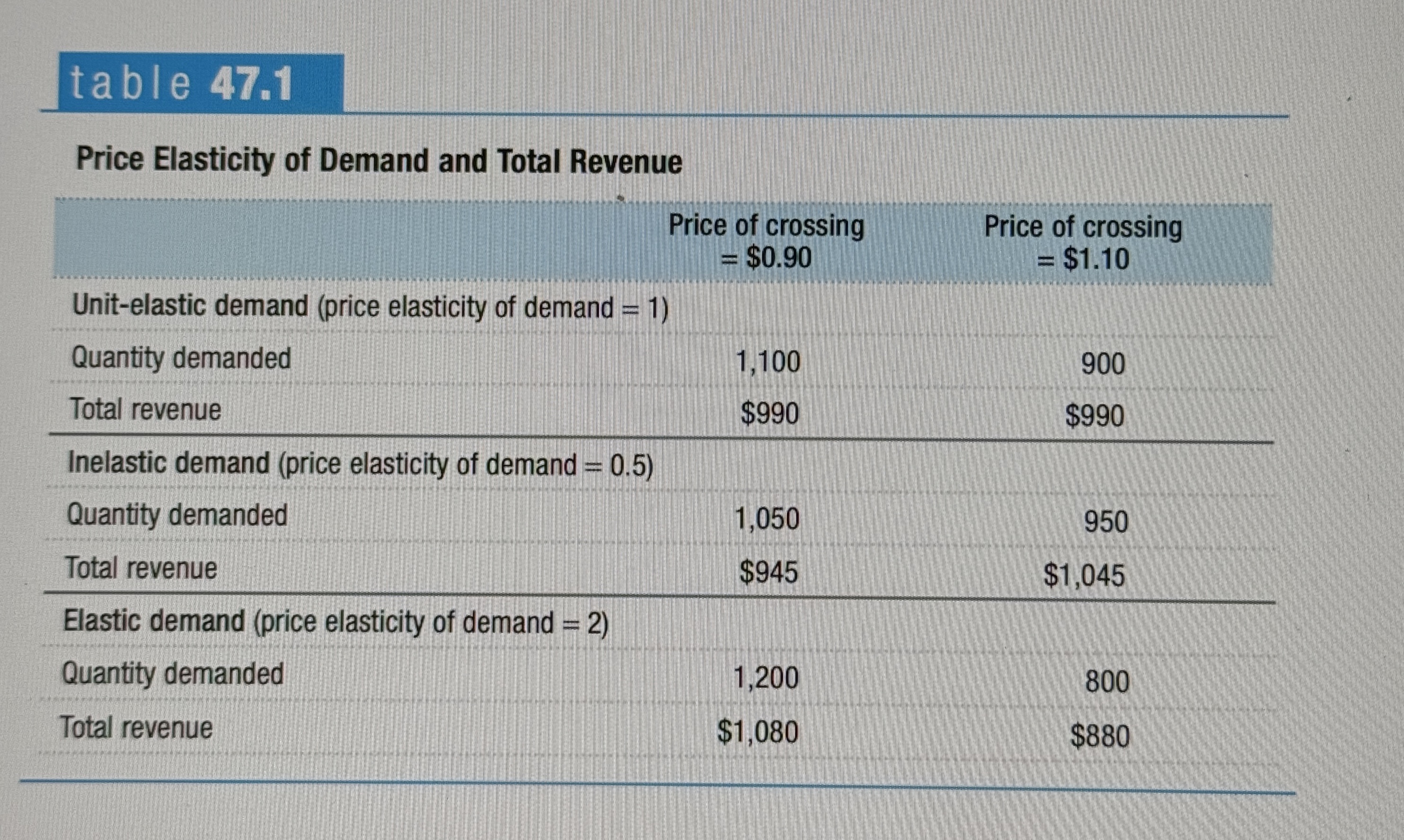
The Price Elasticity of Demand Changes Along the Demand Curve
Ex.
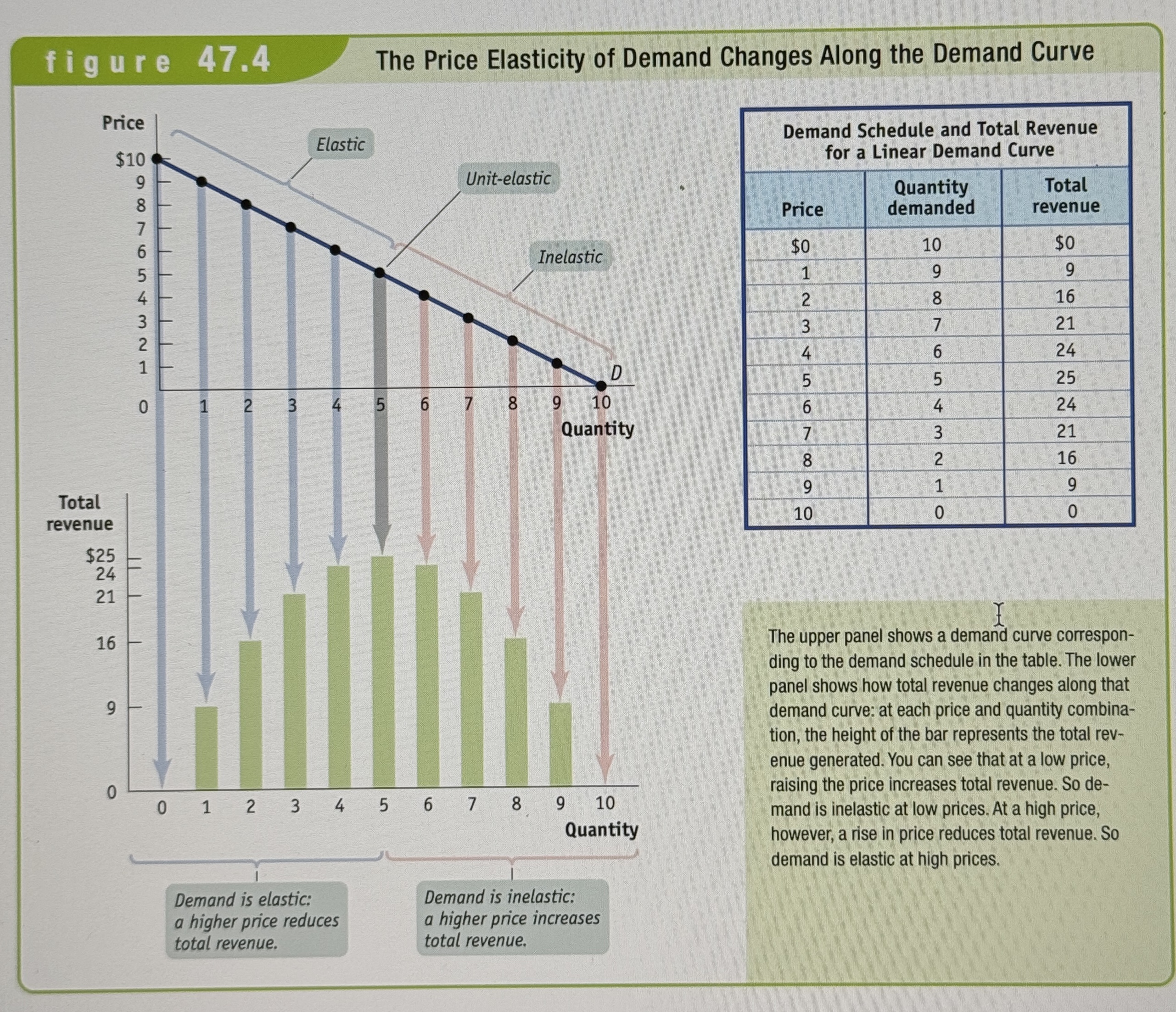
What factors determine the price elasticity of demand?
Whether close substitutes are available
Whether the good is a necessity or a luxury
Share of income spent on the good
Time
Cross-Price Elasticity of Demand
This type of elasticity between two goods measures the effect of the change in one goods price on the quantity demanded of the other good. It is equal to the percent change in the quantity demanded of one good divided by the percent change in the other goods price.

Income Elasticity of Demand
The percent change in the quantity of a good demanded when a consumers income changes divided by the percent change in the consumers income.

Income-Elastic
The demand of a good is income-elastic if the income elasticity of a demand for that good is greater than one.
Income-Inelastic
The demand of a good is income-inelastic if the income elasticity of a demand for that good is positive but less than one.
Price elasticity of supply
The price elasticity of supply is a measure of the responsiveness of the quantity of a good supplied to the price of that good. It is the ratio of the percent change in the quantity supplied to the percent change in the price as we move along the supply curve.

Perfectly inelastic supply
There is perfectly inelastic supply when the price elasticity of supply is zero, so that changes in the price of the good have no effect on the quantity supplied. A perfectly inelastic supply curve is a vertical line.
Perfectly elastic supply
There is perfectly elastic supply if the quantity supplied is zero below some price and infinite above that price. A perfectly elastic supply curve is a horizontal line.
Two Extreme Cases of Price Elasticity of Supply
Ex.
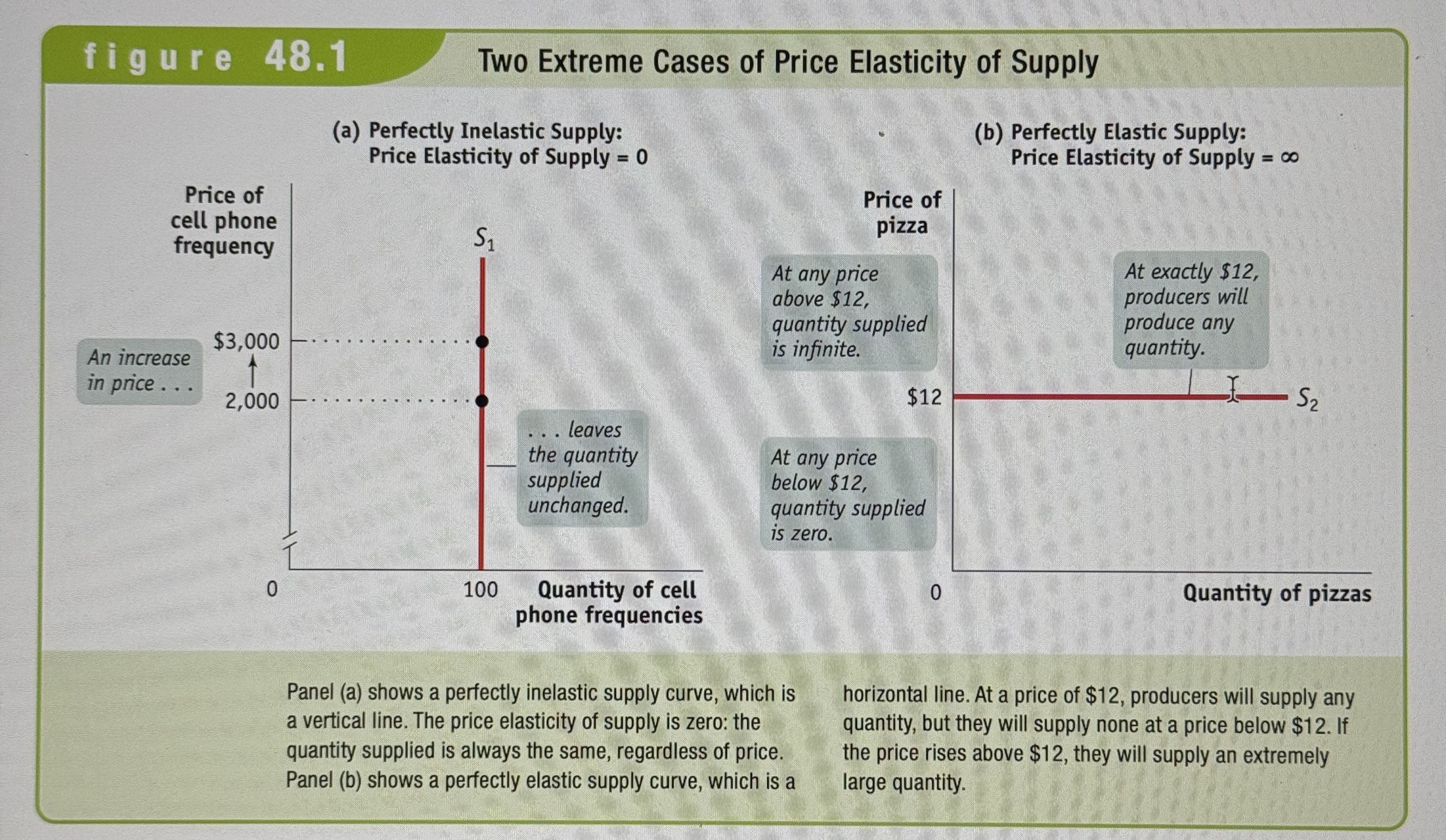
What factors determine the price elasticity of supply?
The availability of inputs
Time
An Elasticity Menagerie
Ex.
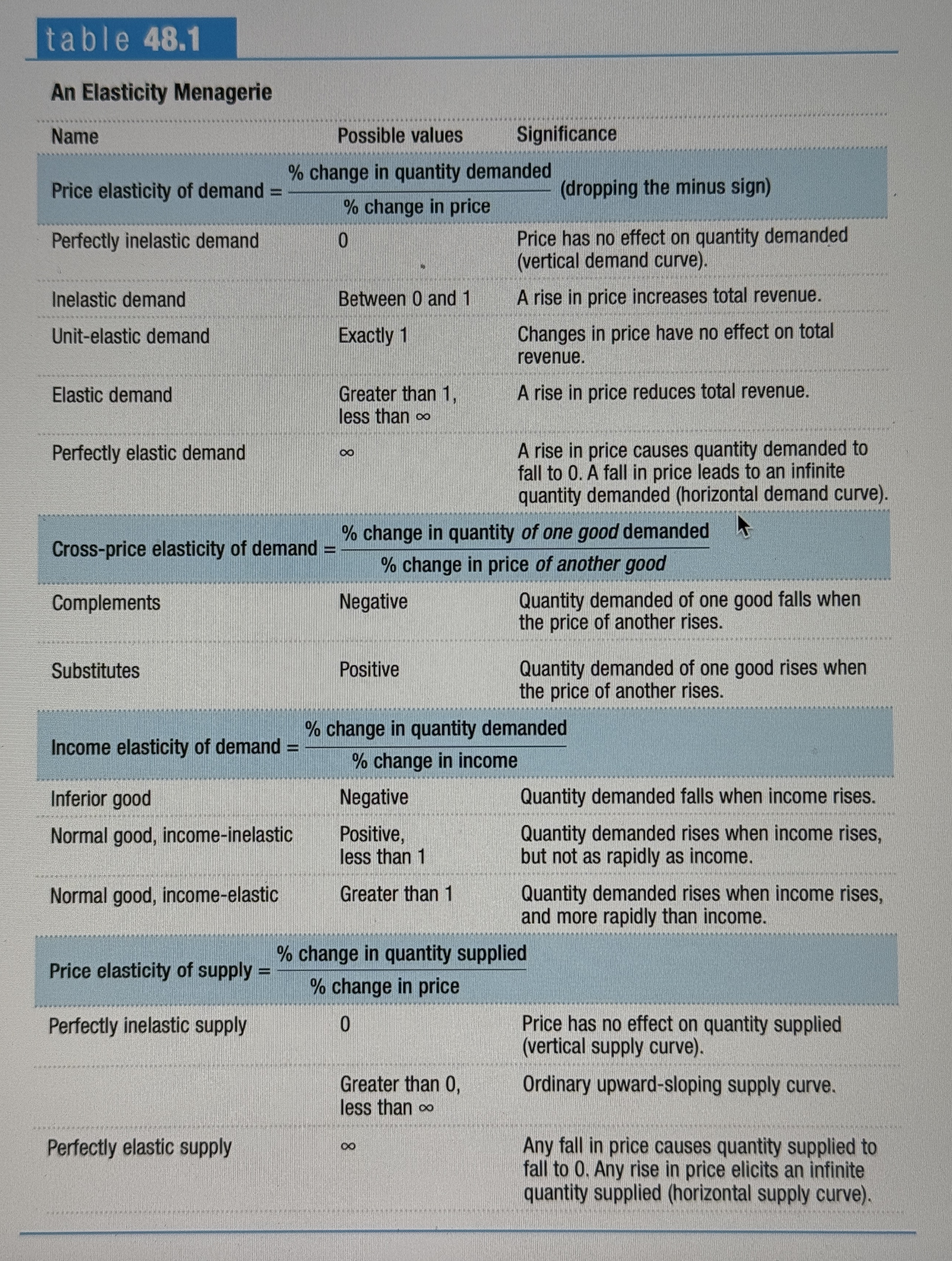
Willingness to pay
A consumers willingness to pay for a good is the maximum price at which he or she would buy that good.
The Demand Curve for Used Textbooks
Ex.
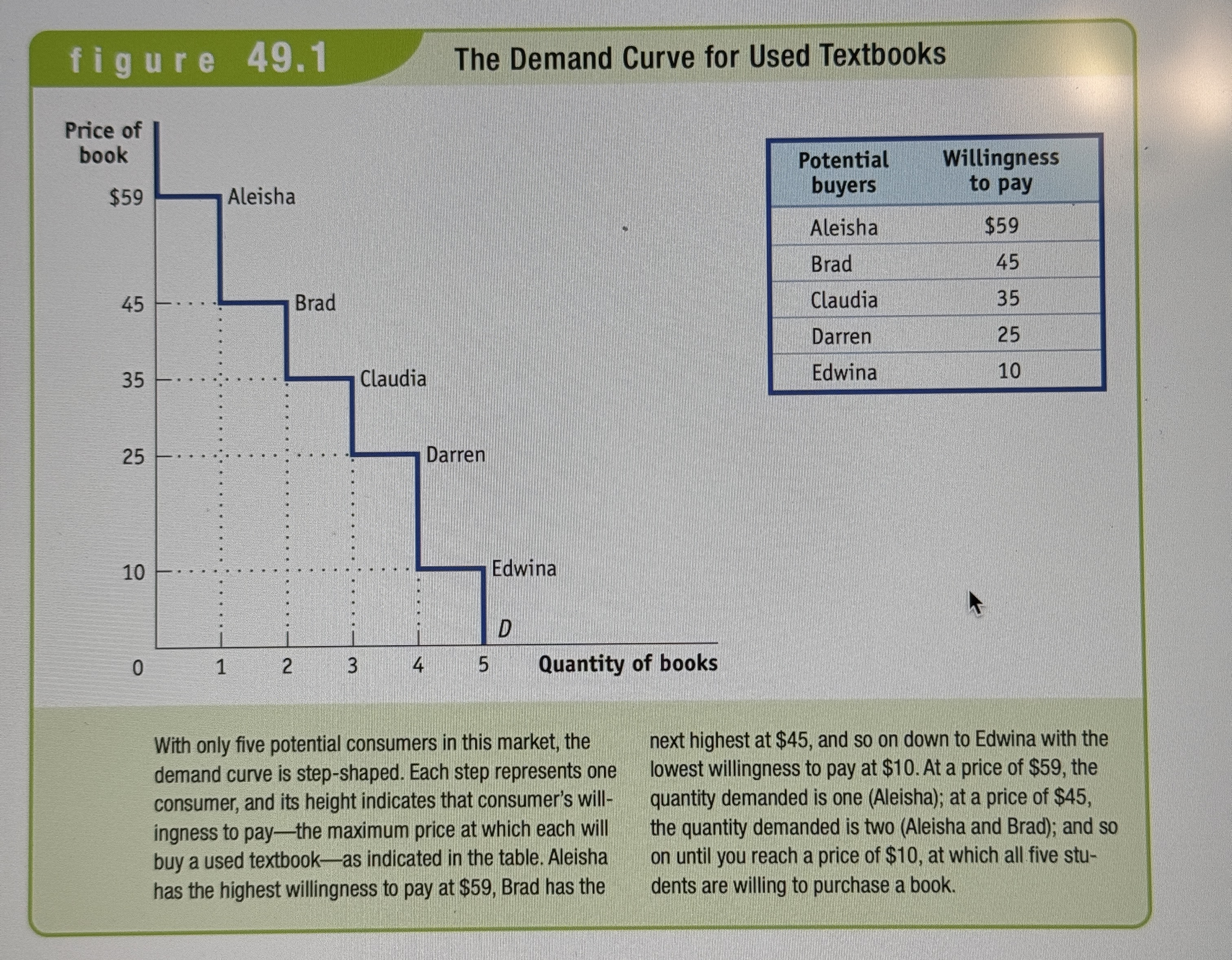
Consumer Surplus When the Price of a Used Textbook Is $30
Ex.
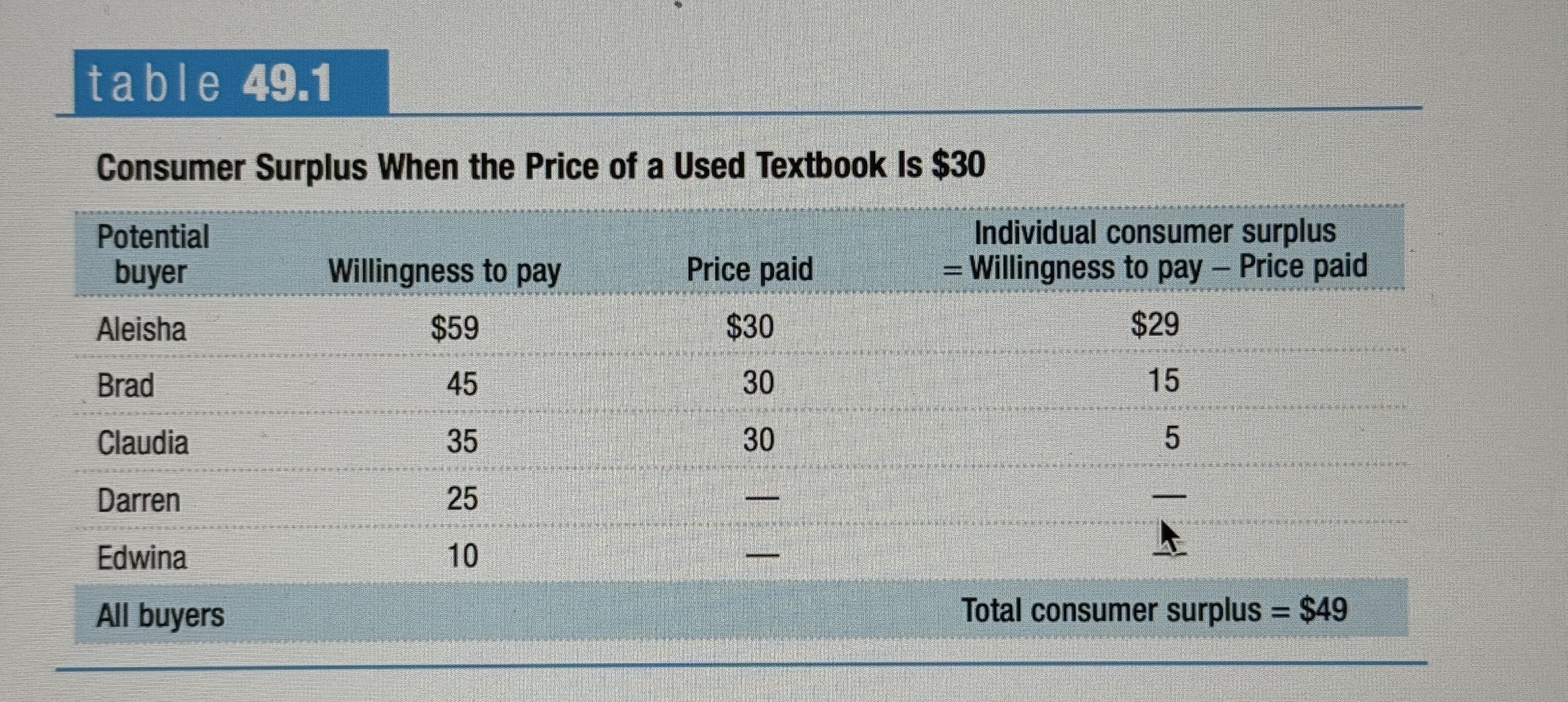
Individual consumer surplus
The net gain to an individual buyer from the purchase of a good. It is equal to the difference between the buyers willingness to pay and the price paid.
Total consumer surplus
The sum of the individual consumer surpluses of all the buyers of goods in a market.
Consumer surplus
The term is often used to refer to both individual and total consumer surplus.
Consumer Surplus in the Used-Textbook Market
Ex.
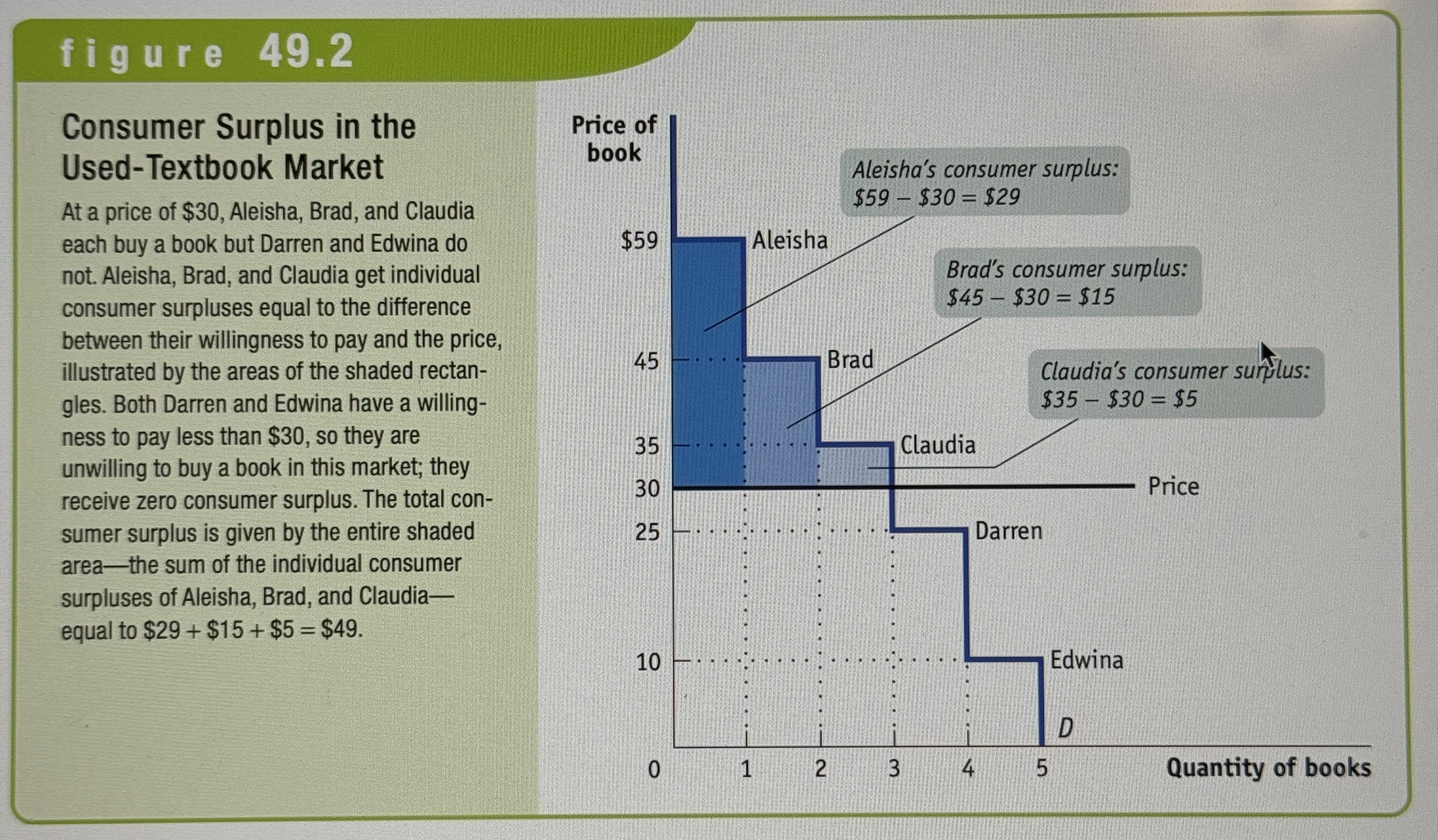
Consumer Surplus Graph
Ex.
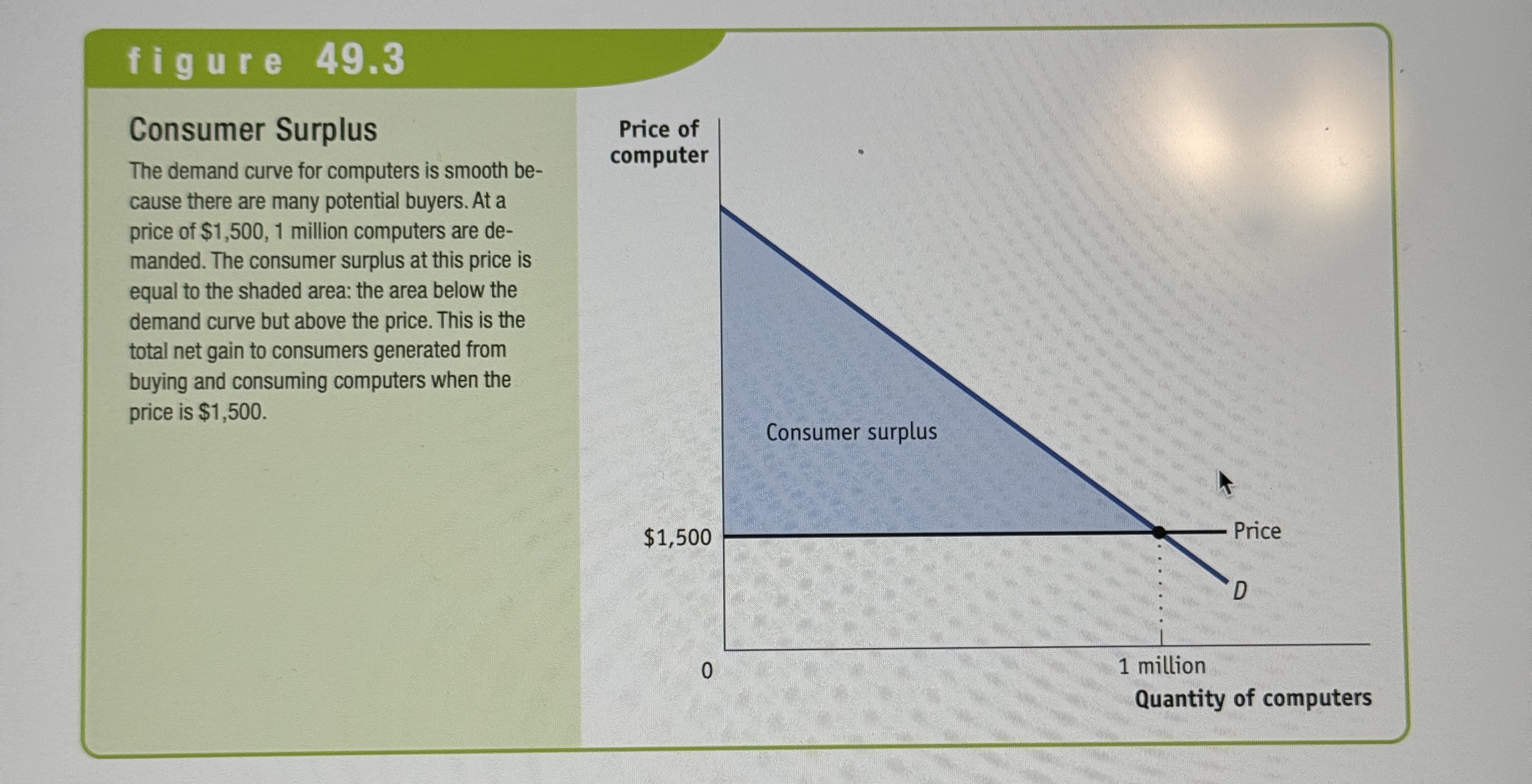
Consumer Surplus and a Fall in the Price of Used Textbooks
Ex.
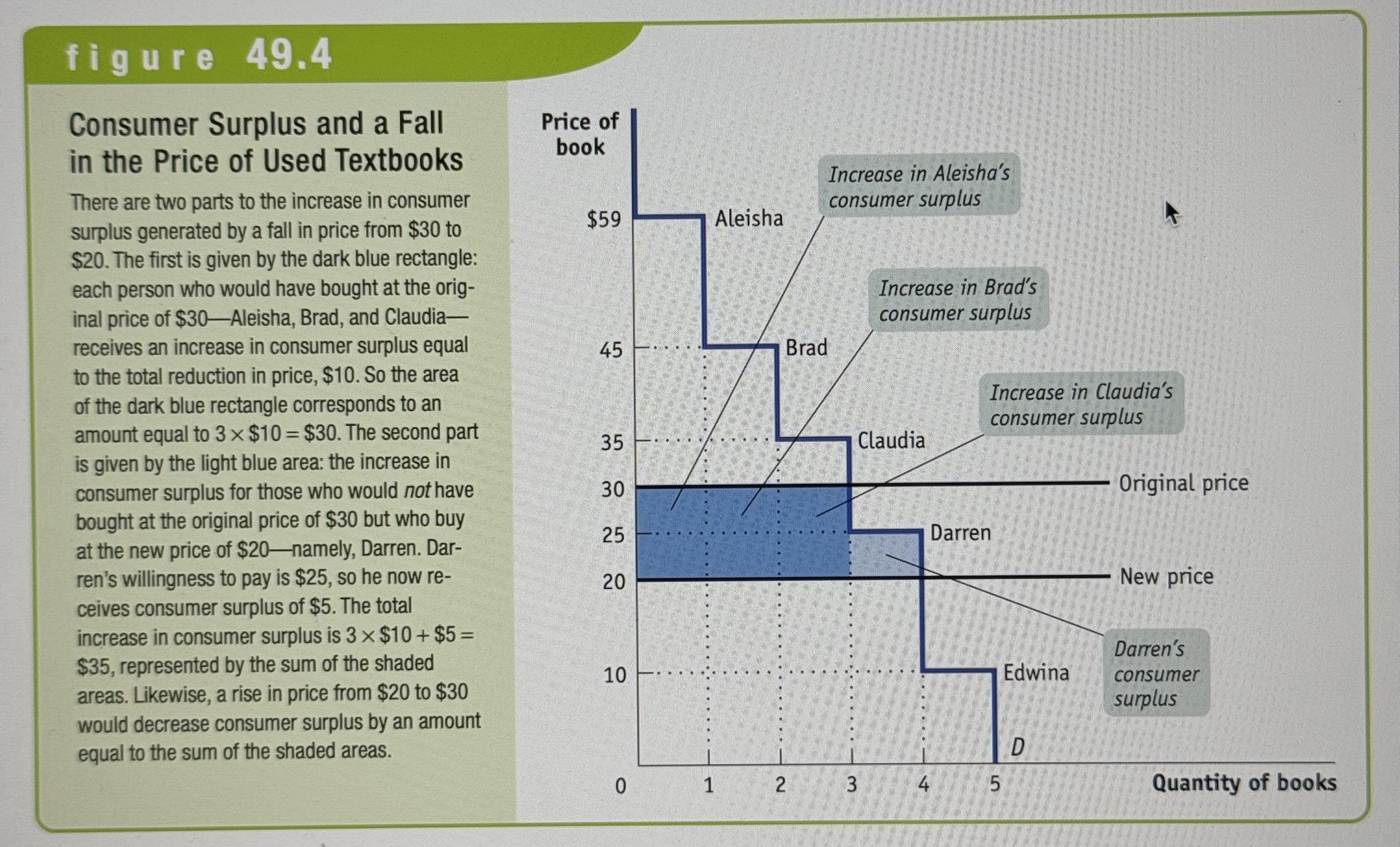
A Fall in the Price Increases Consumer Surplus
Ex.
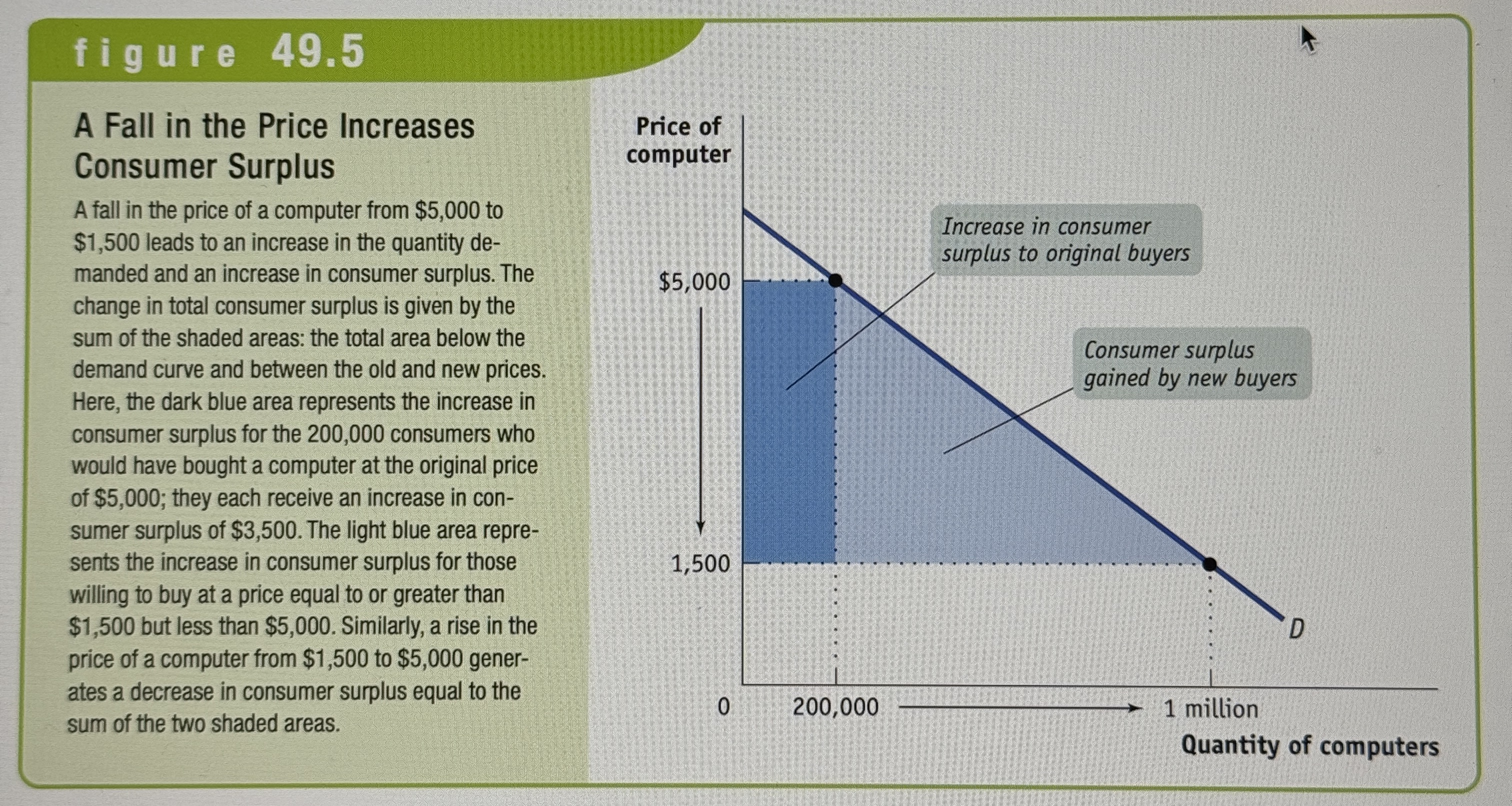
The Supply Curve for Used Textbooks
Ex.
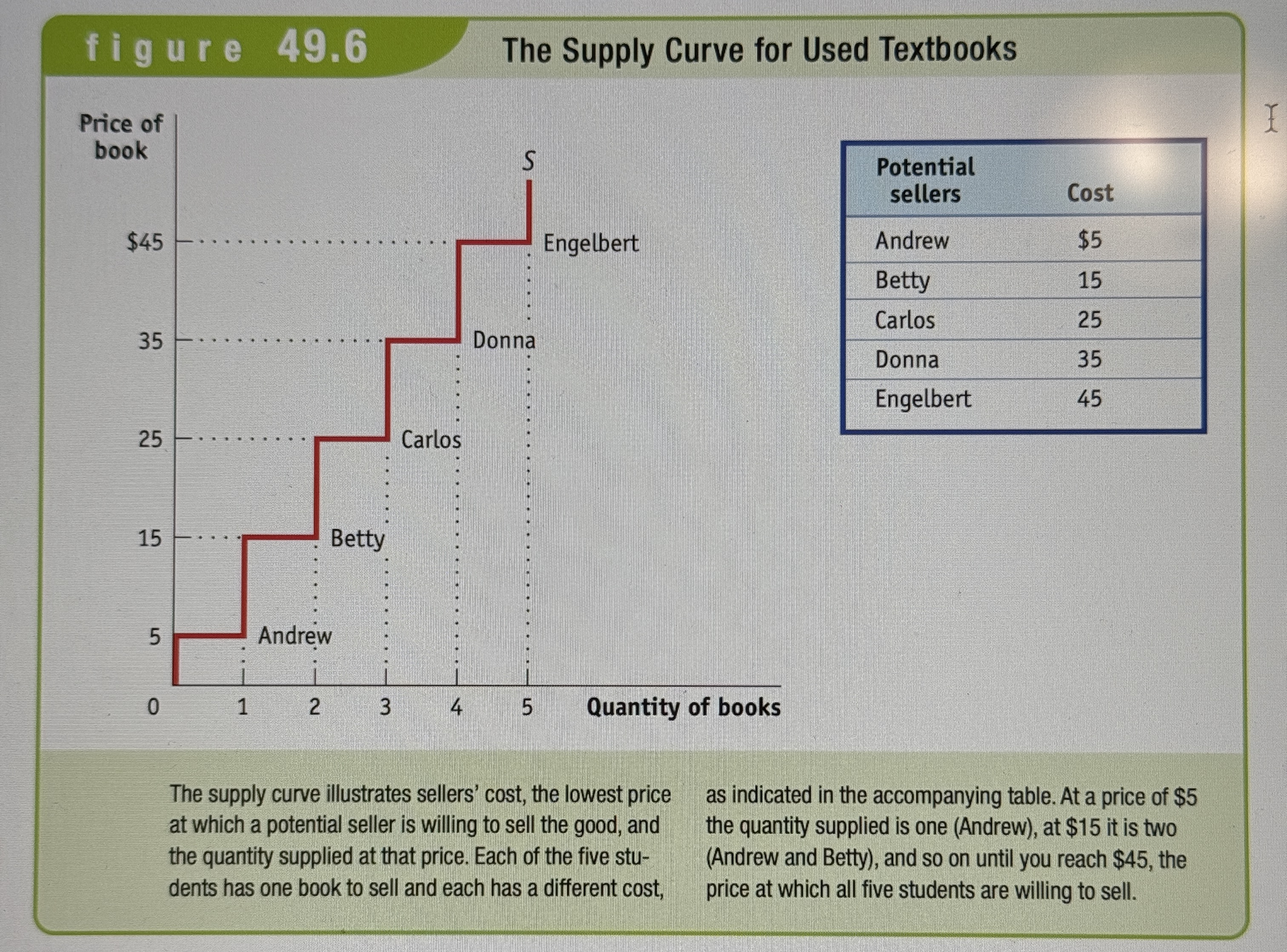
Sellers Cost
The lowest price at which a seller is willing to sell a good.
Individual Producer Surplus
The net gain to an individual seller from selling a good. It is equal to the difference between the price and the sellers cost.
Total Producer Surplus
In a market it is the sum of the individual producer surpluses of all the sellers of a good in a market.
Producer Surplus
Often used to refer to both the individual and the total producer surplus.
Producer Surplus When the Price of a Used Textbook Is $30
Ex.
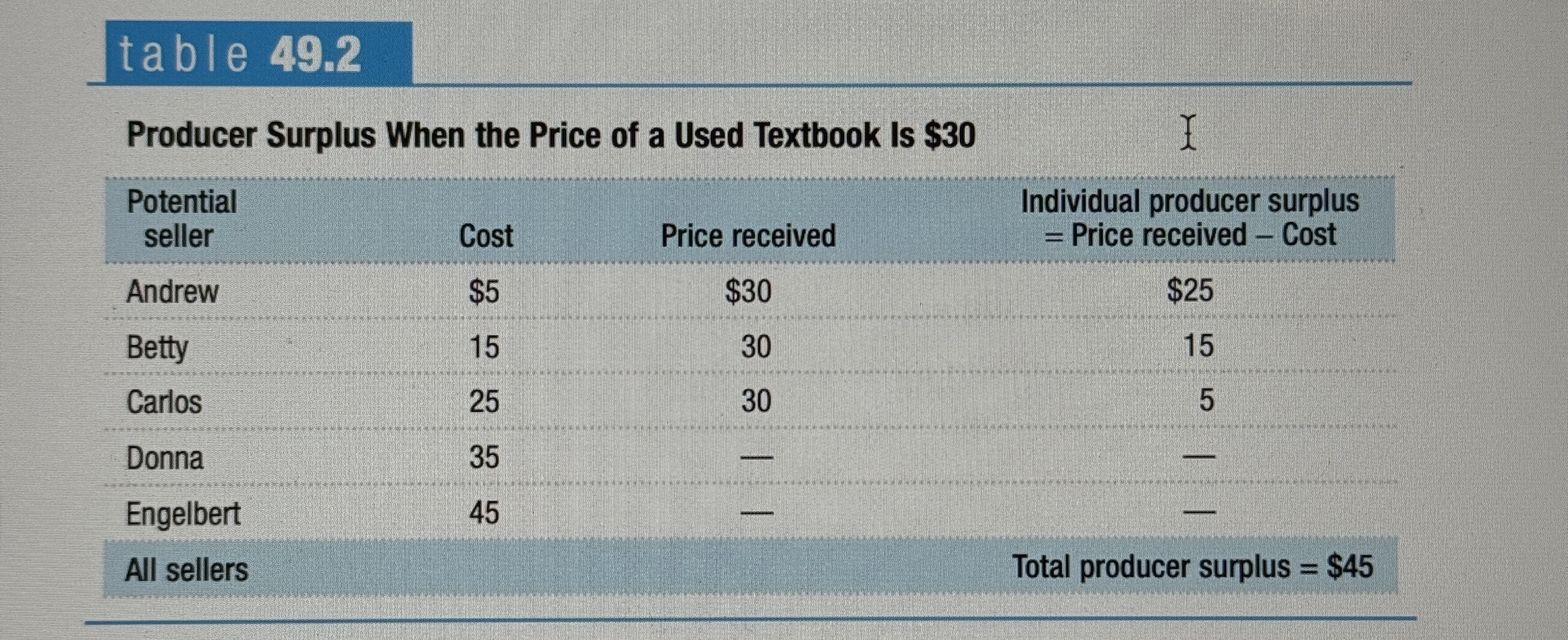
Producer Surplus in the Used-Textbook Market
Ex.
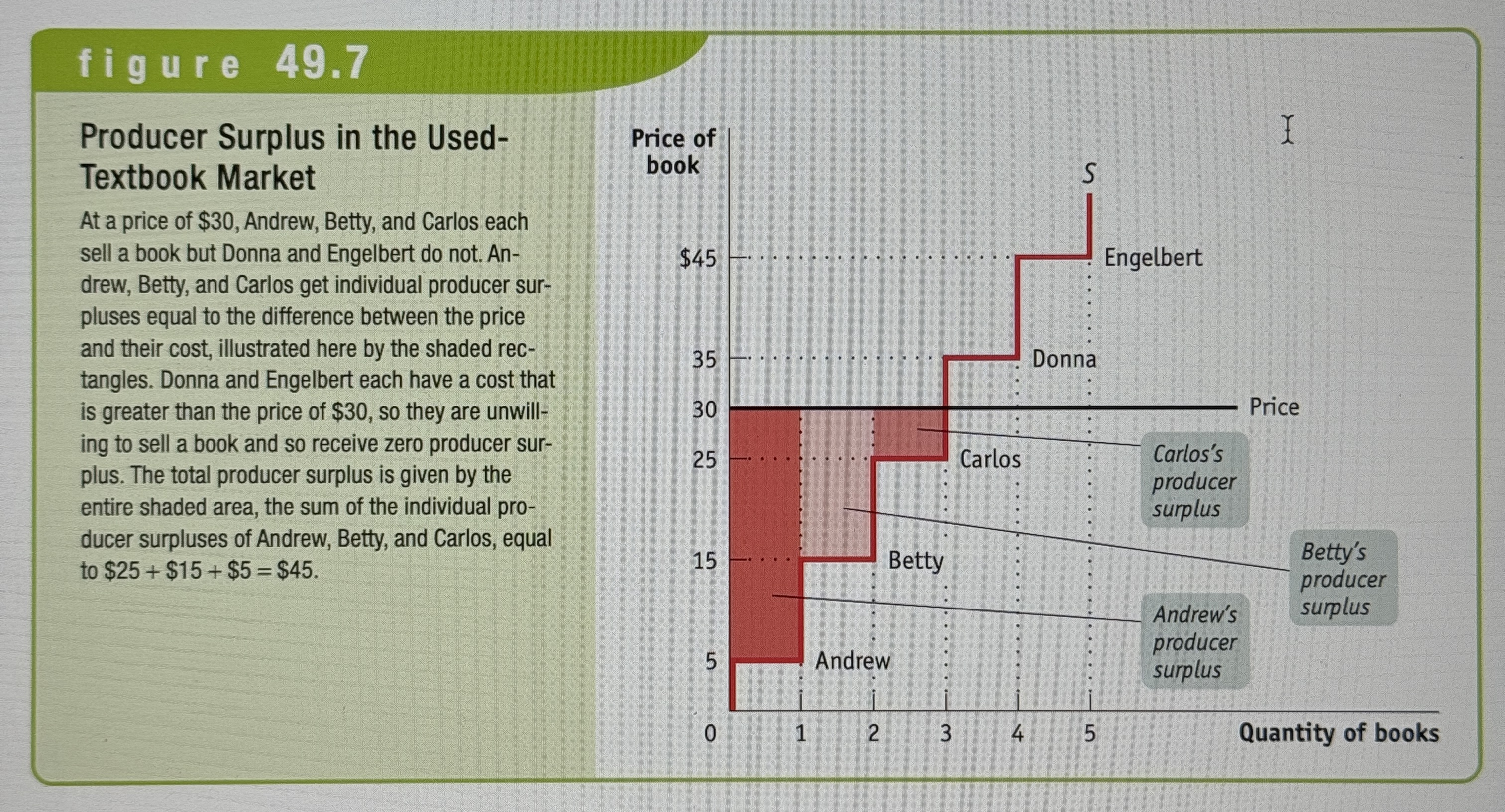
Producer Surplus Graph
Ex.
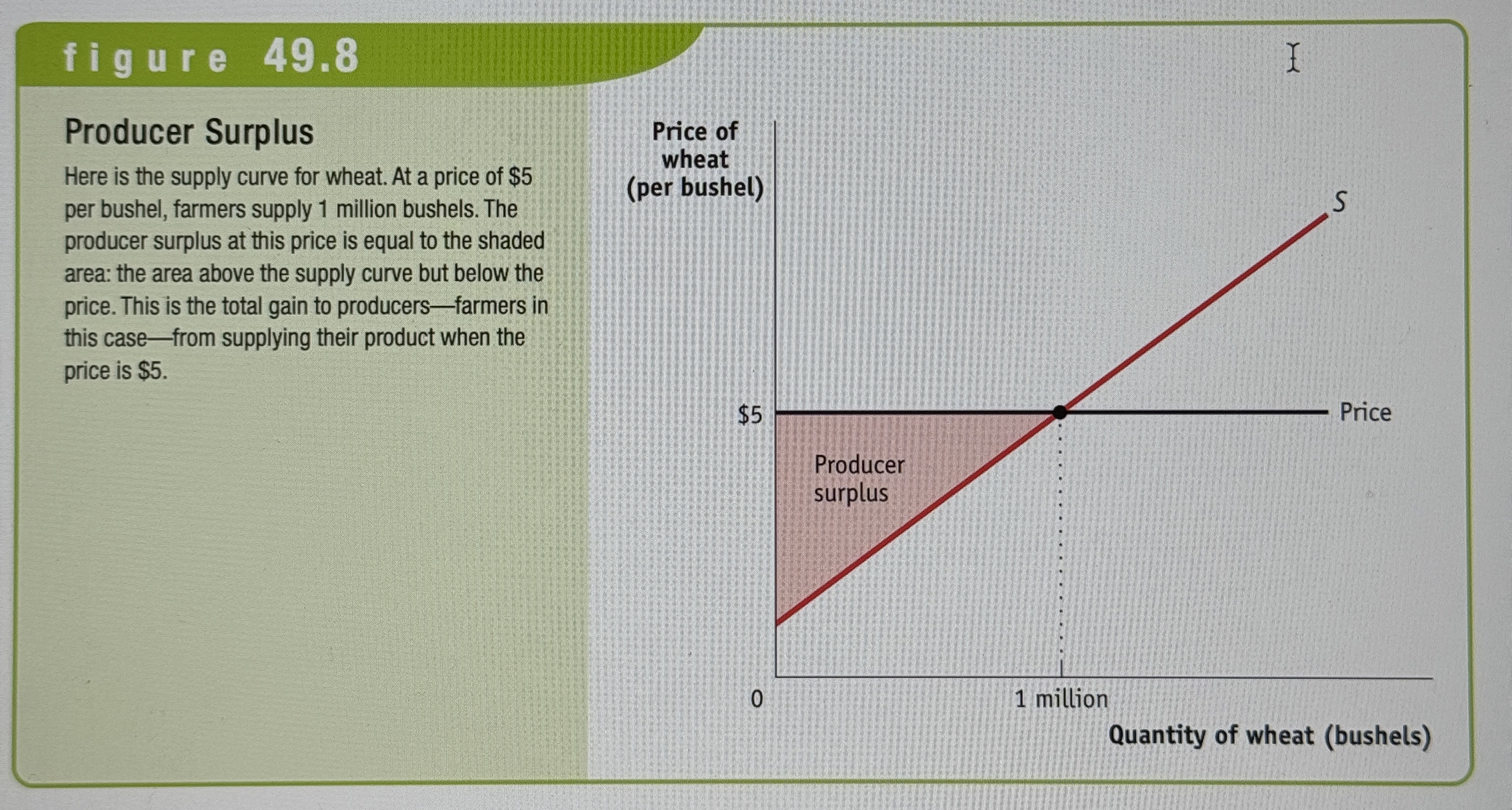
A Rise in the Price Increases Producer Surplus
Ex.
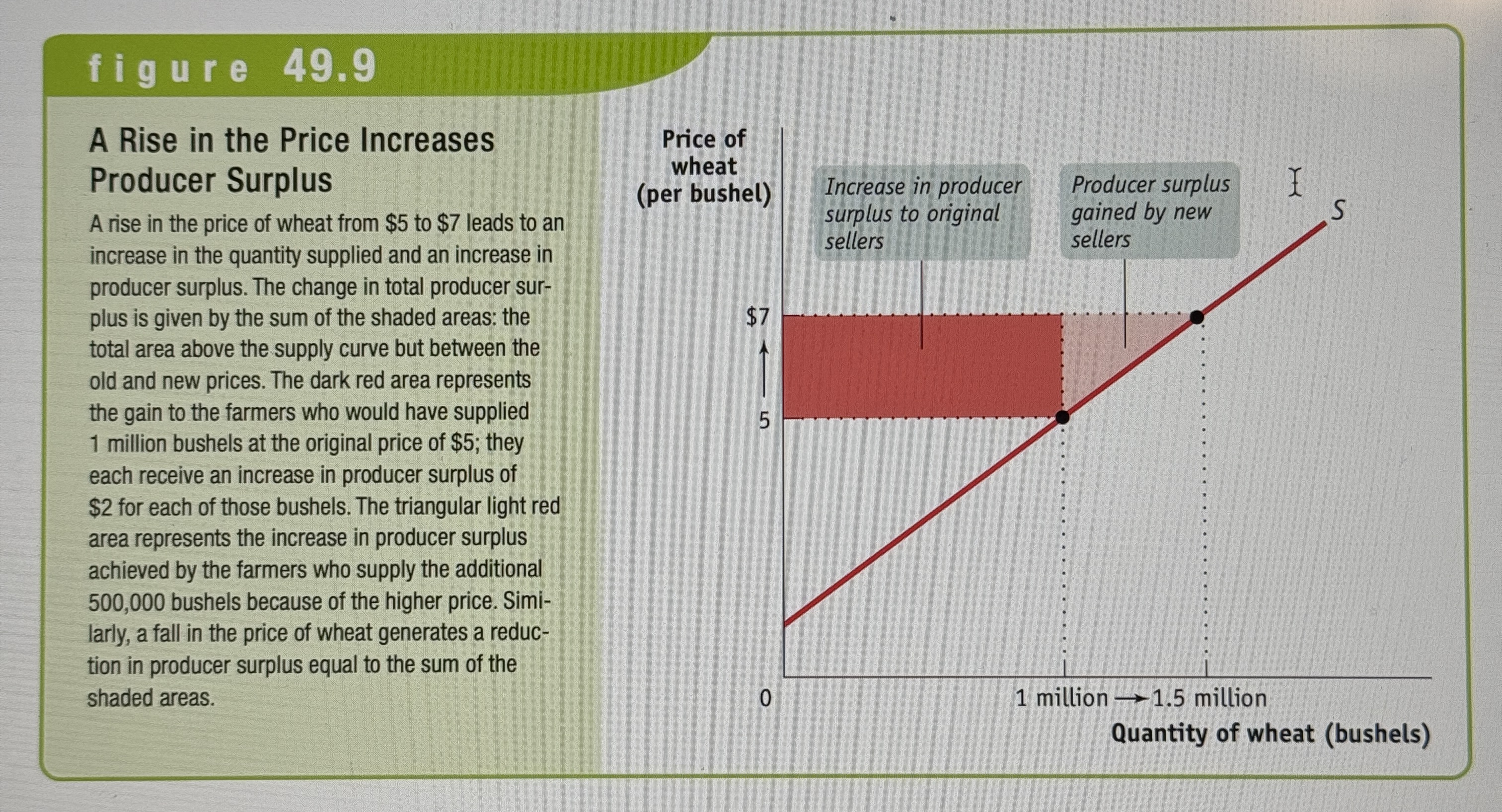
Total Surplus
The total net gain to consumers and producers from trading in a market. It is the sum of producer and consumer surplus.
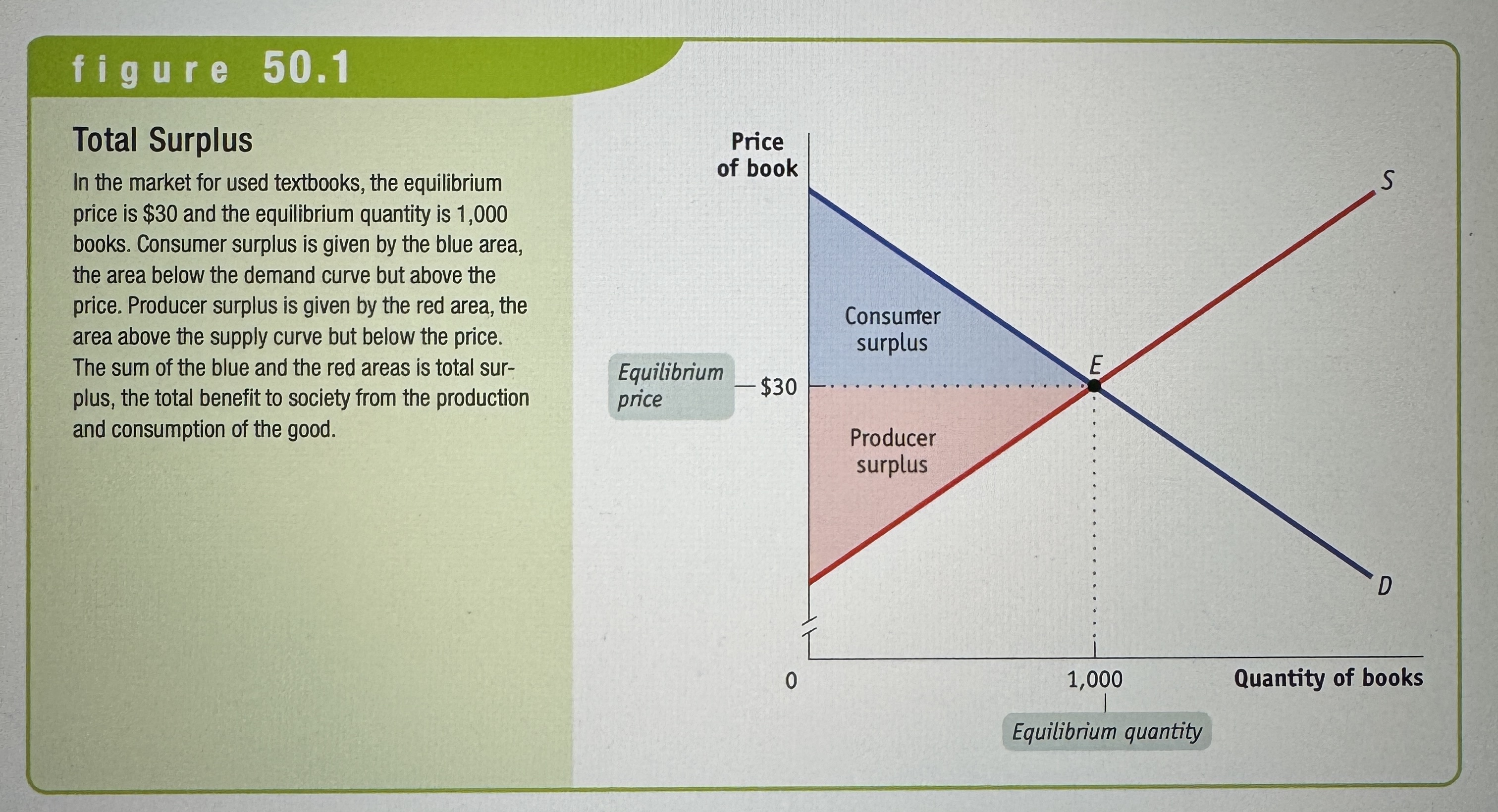
Reallocating Consumption Lowers Consumer Surplus
Ex.
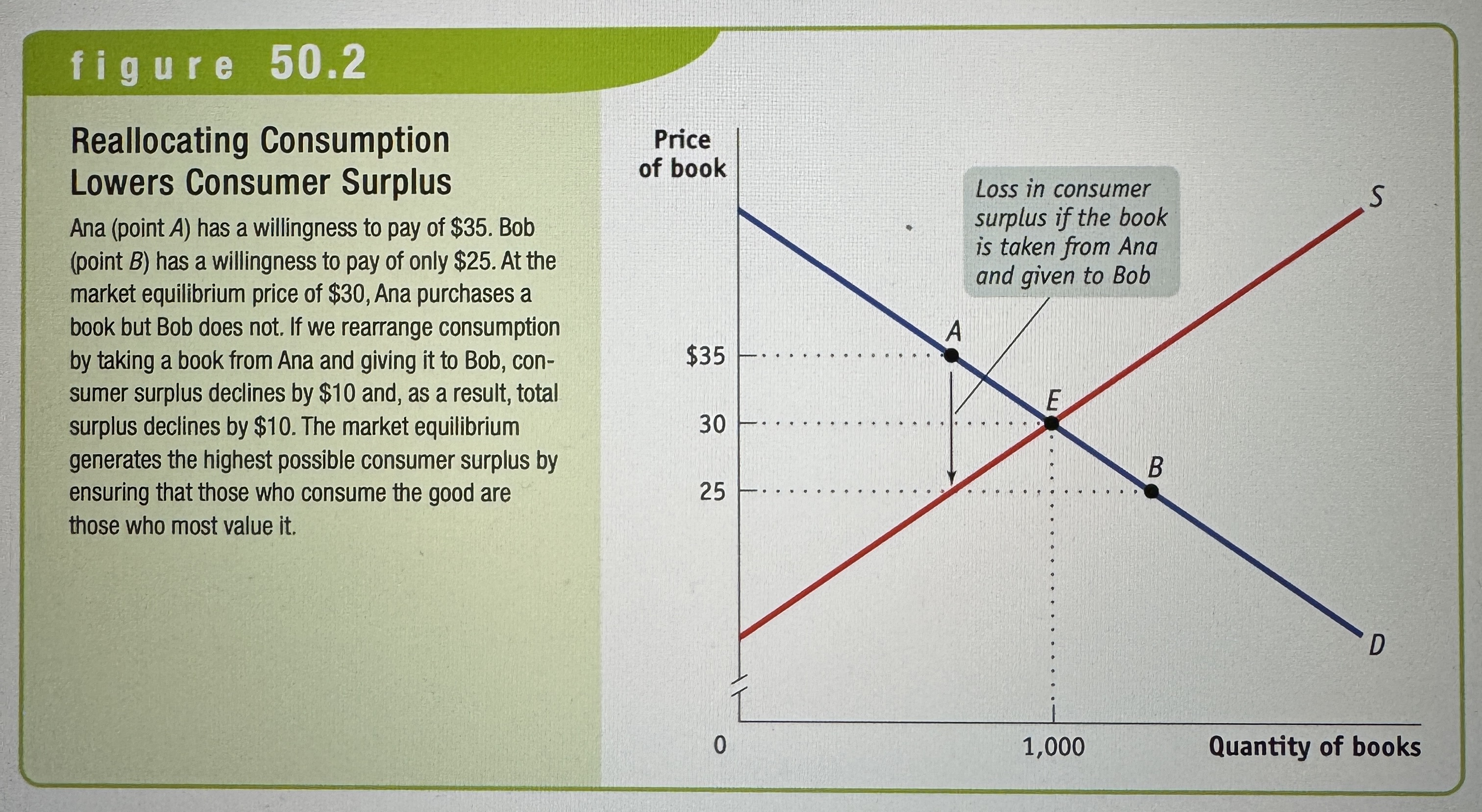
Reallocating Sales Lowers Producer Surplus
Ex.
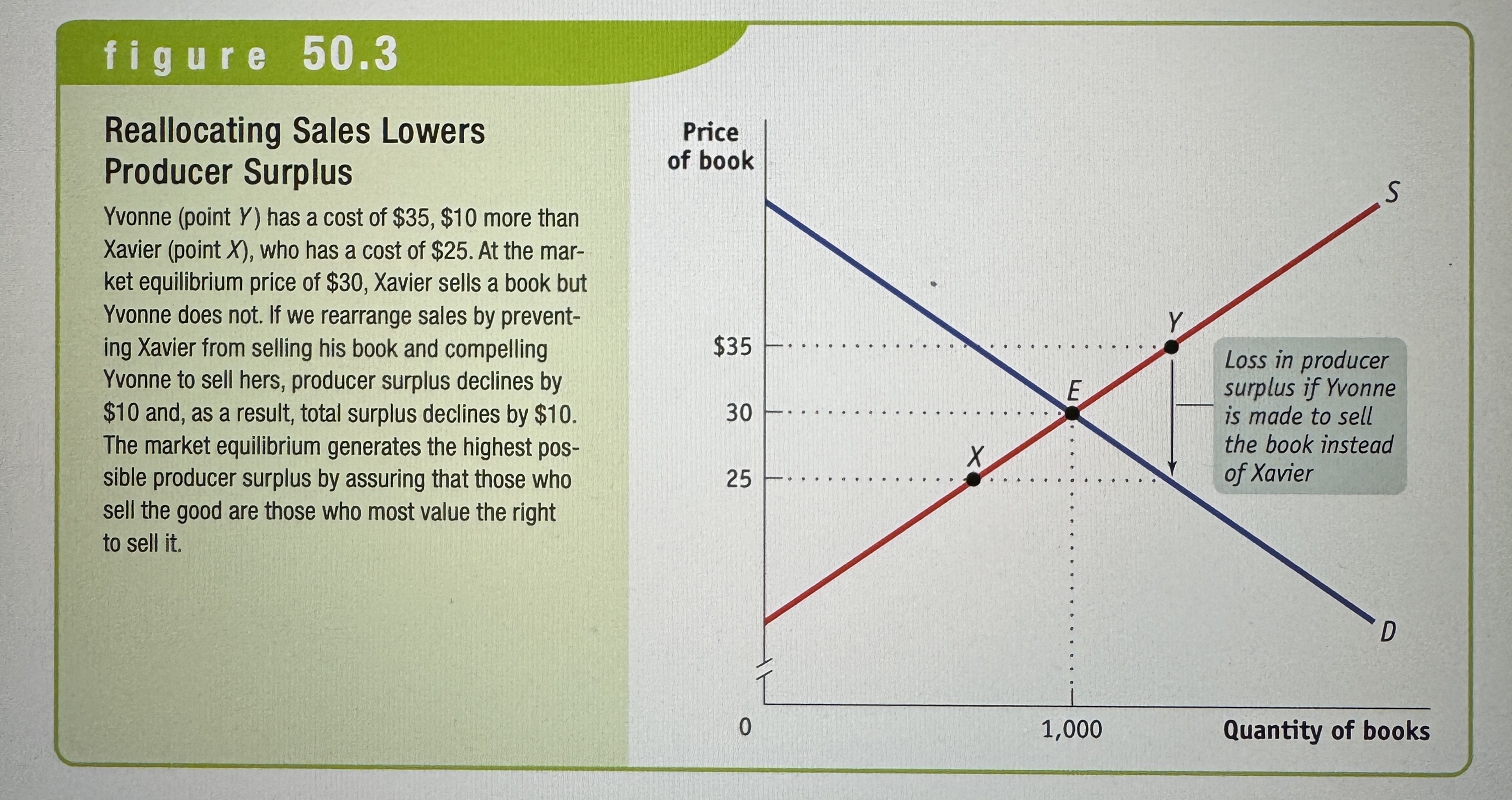
Changing the Quantity Lowers Total Surplus
Ex.
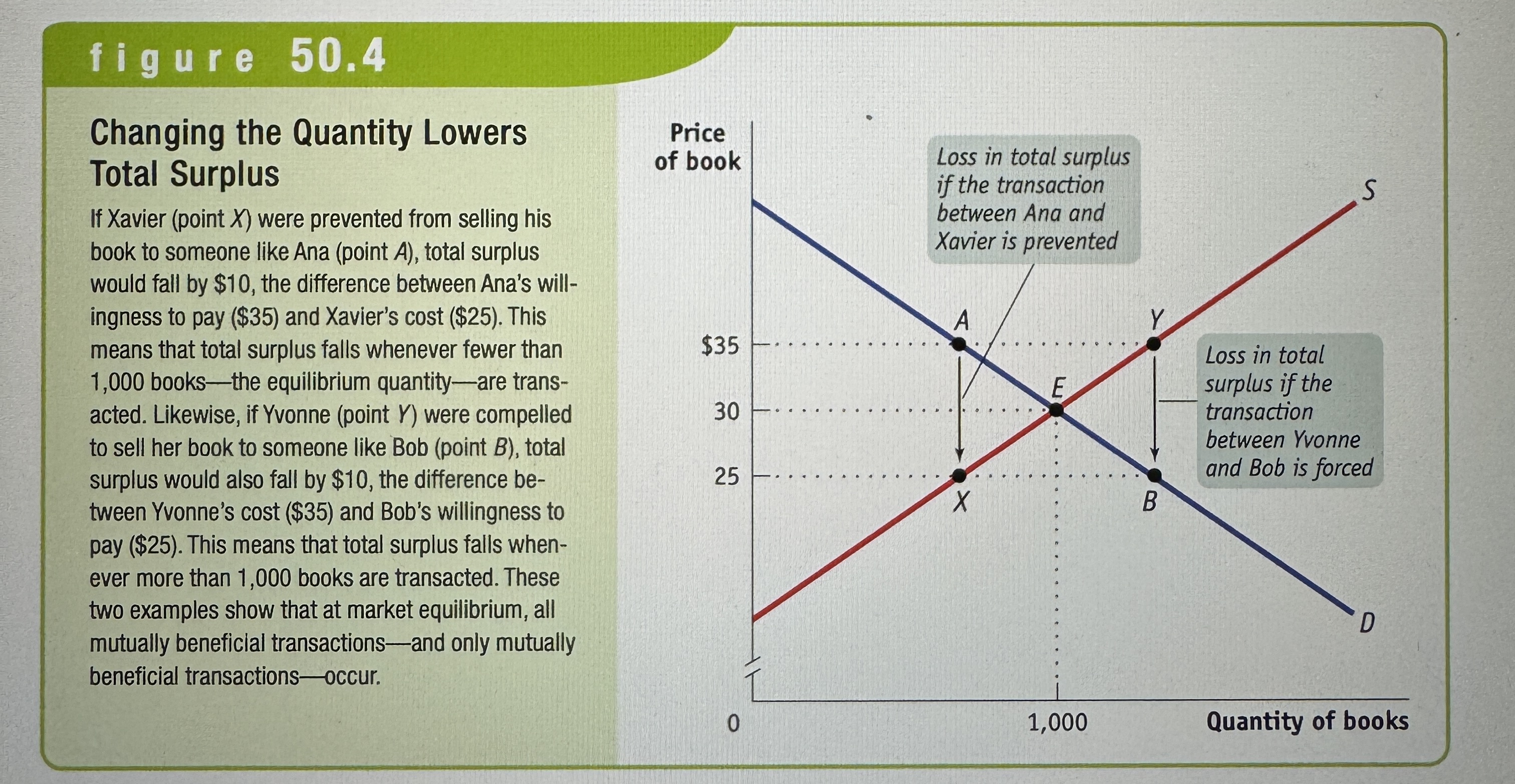
Progressive Tax
A tax that rises more than in proportion to income.
Regressive Tax
A tax that rises less than in proportion to income.
Proportional Tax
A tax that rises in proportion to income.
Excise Tax
A tax on sales of a particular good or service.
The Supply and Demand for Hotel Rooms in Potterville
Ex.
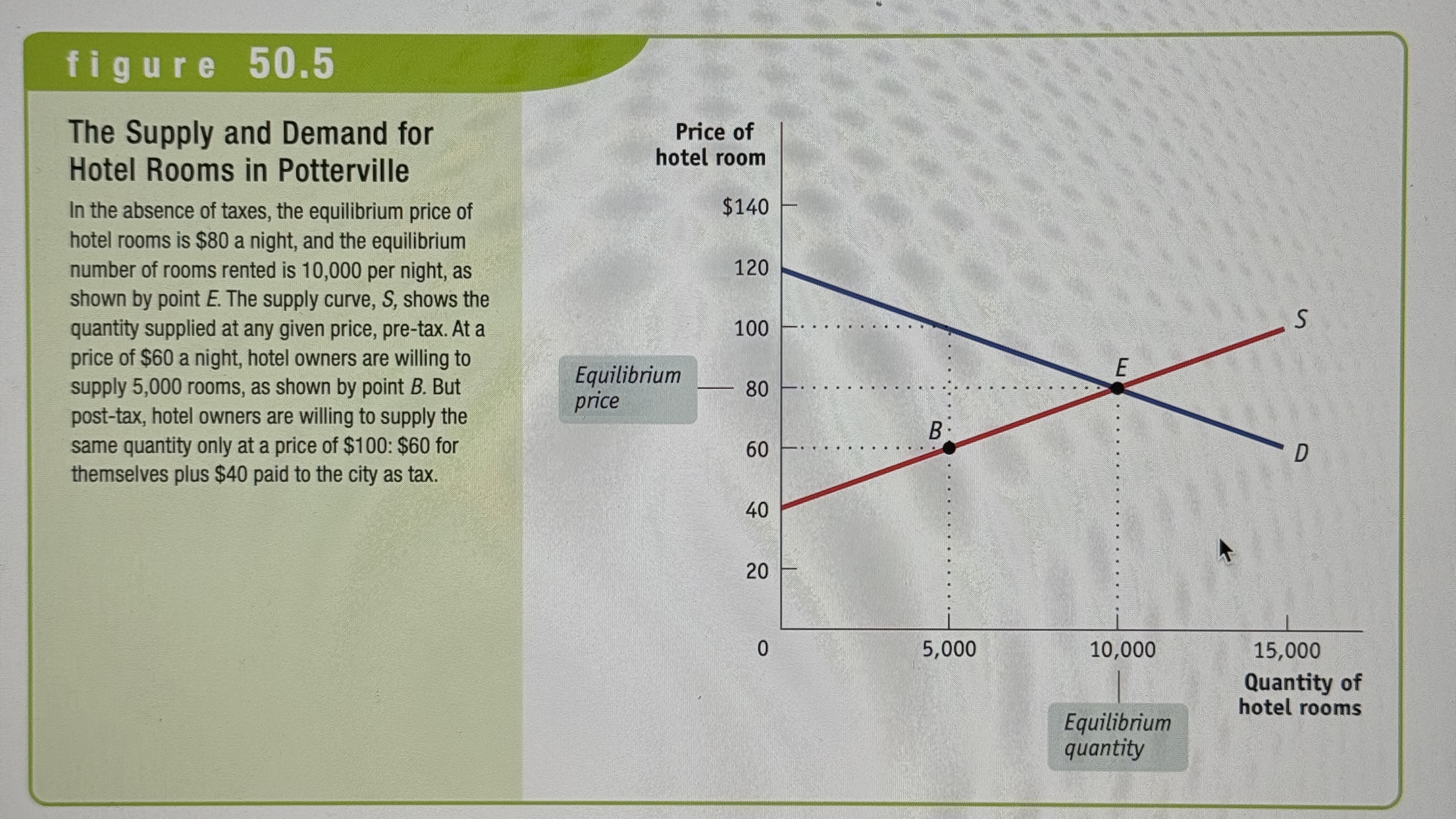
An Excise Tax Imposed on Hotel Owners
Ex.
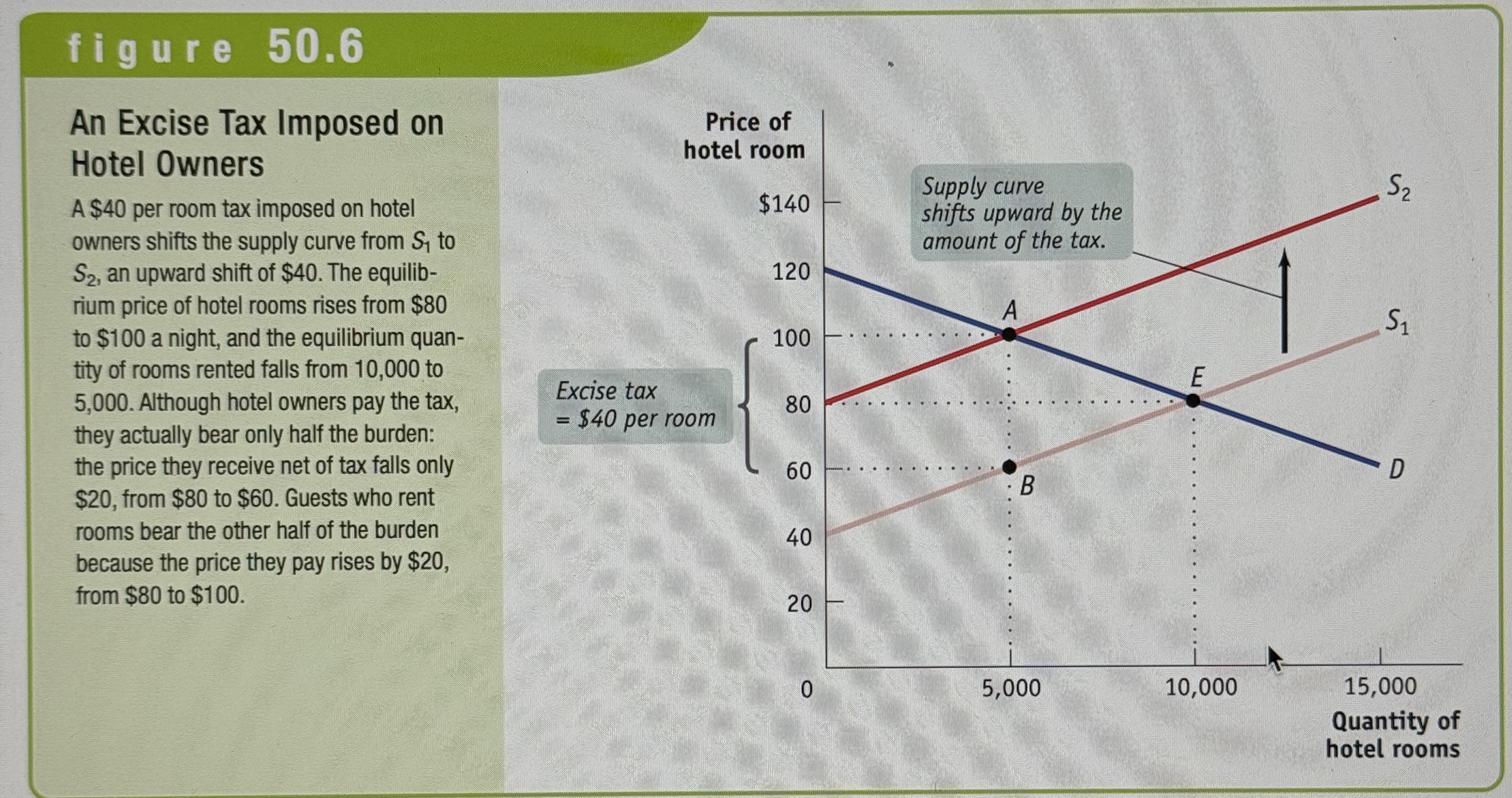
An Excise Tax Imposed on Hotel Guests
Ex.
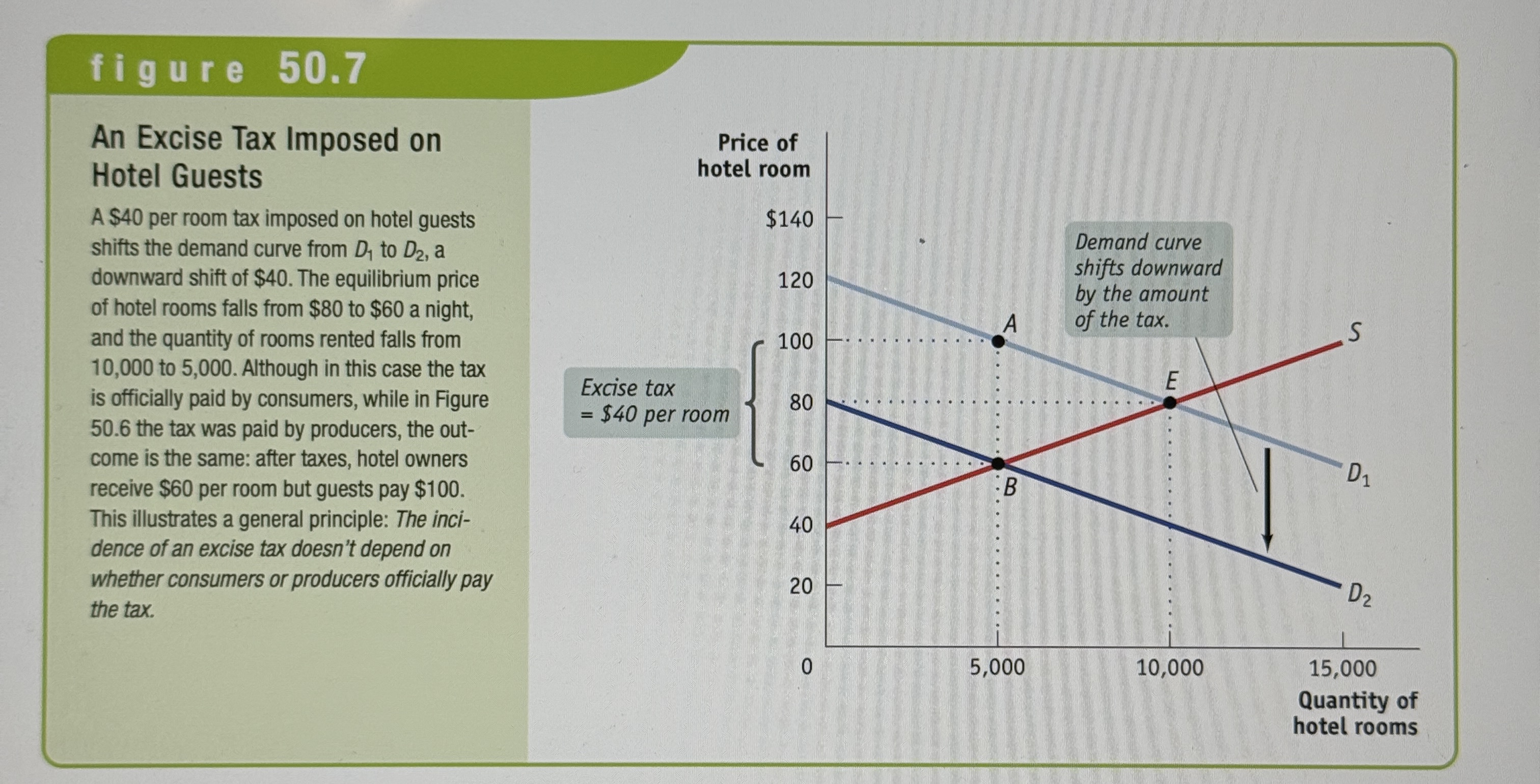
Tax Incidence
The distribution of the tax burden.
An Excise Tax Paid Mainly by Consumers
Ex.

An Excise Tax Paid Mainly by Producers
Ex.
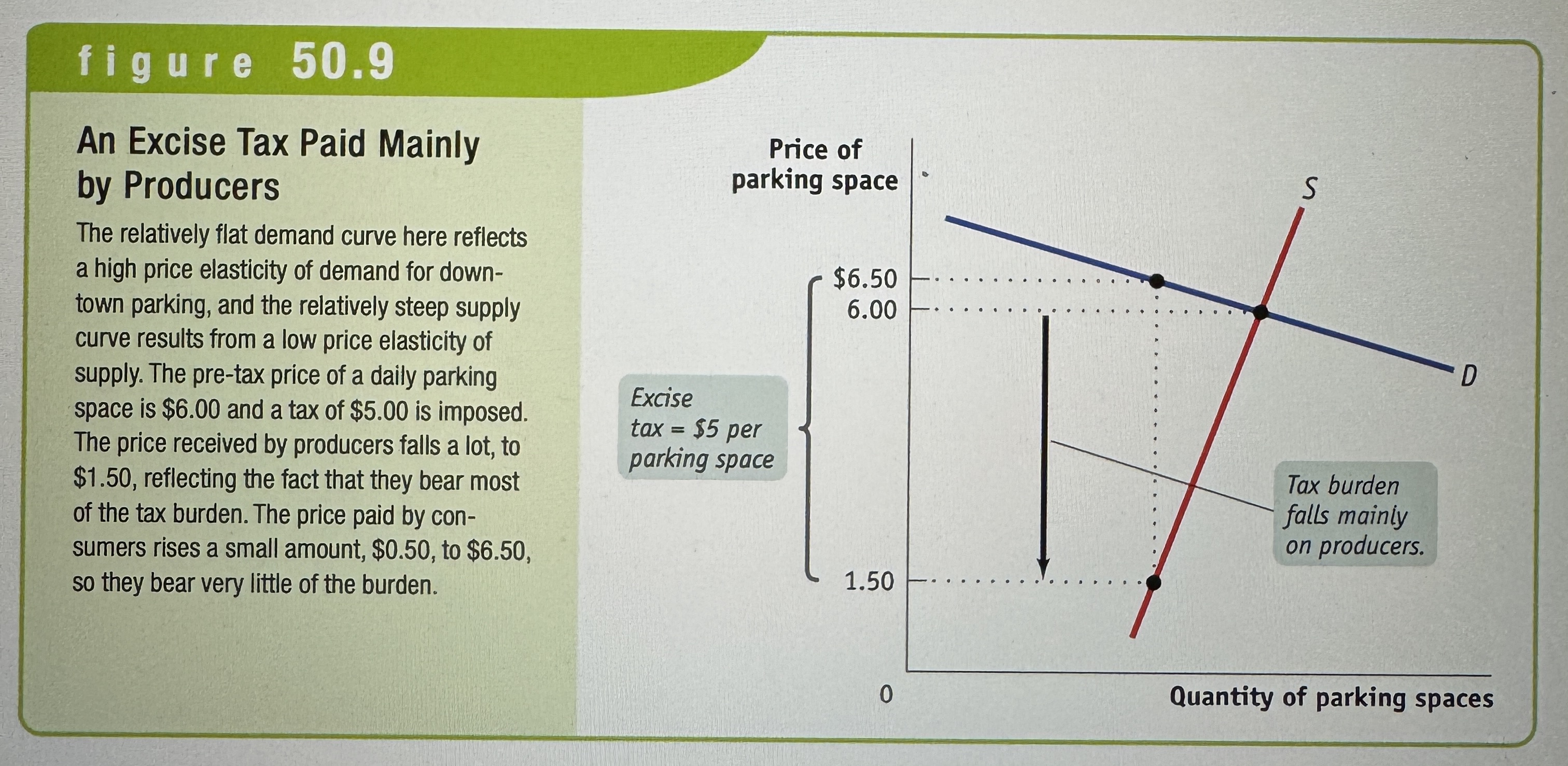
The Revenue from an Excise Tax
Ex.
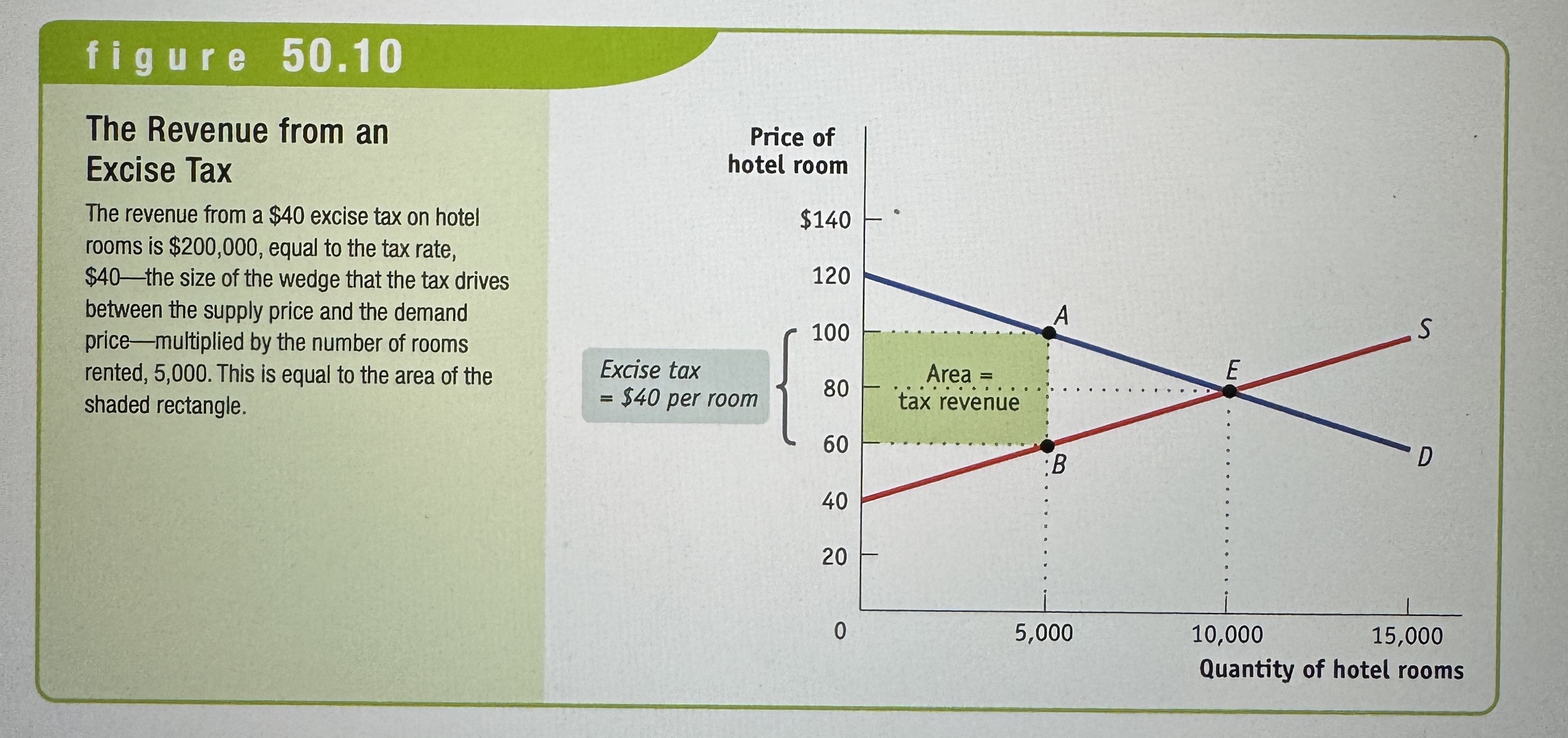
Deadweight Loss
From a tax, it is the decrease in total surplus resulting from the tax, minus the tax revenue generated.
A Tax Reduces Consumer and Producer Surplus
Ex.
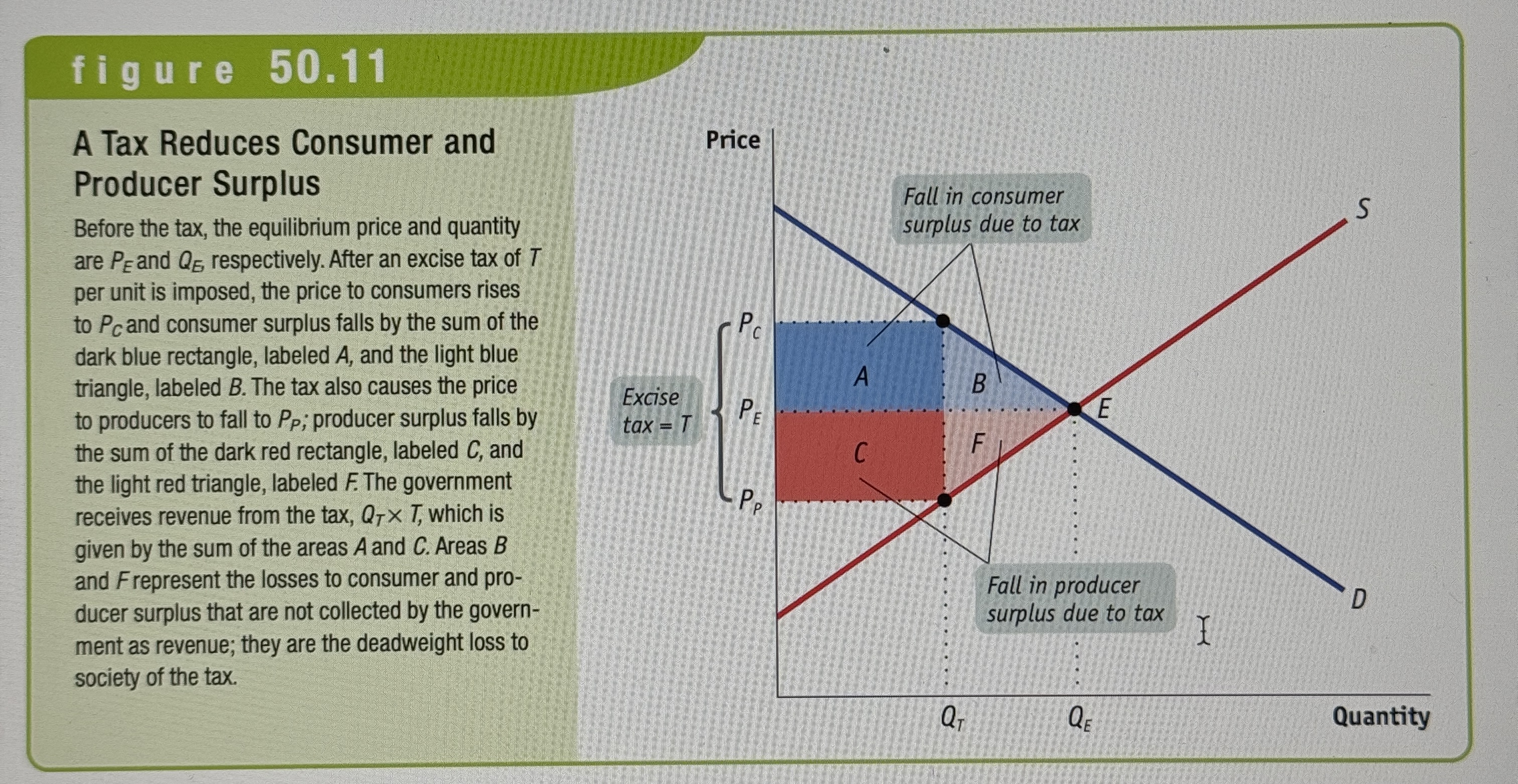
The Deadweight Loss of a Tax
Ex.
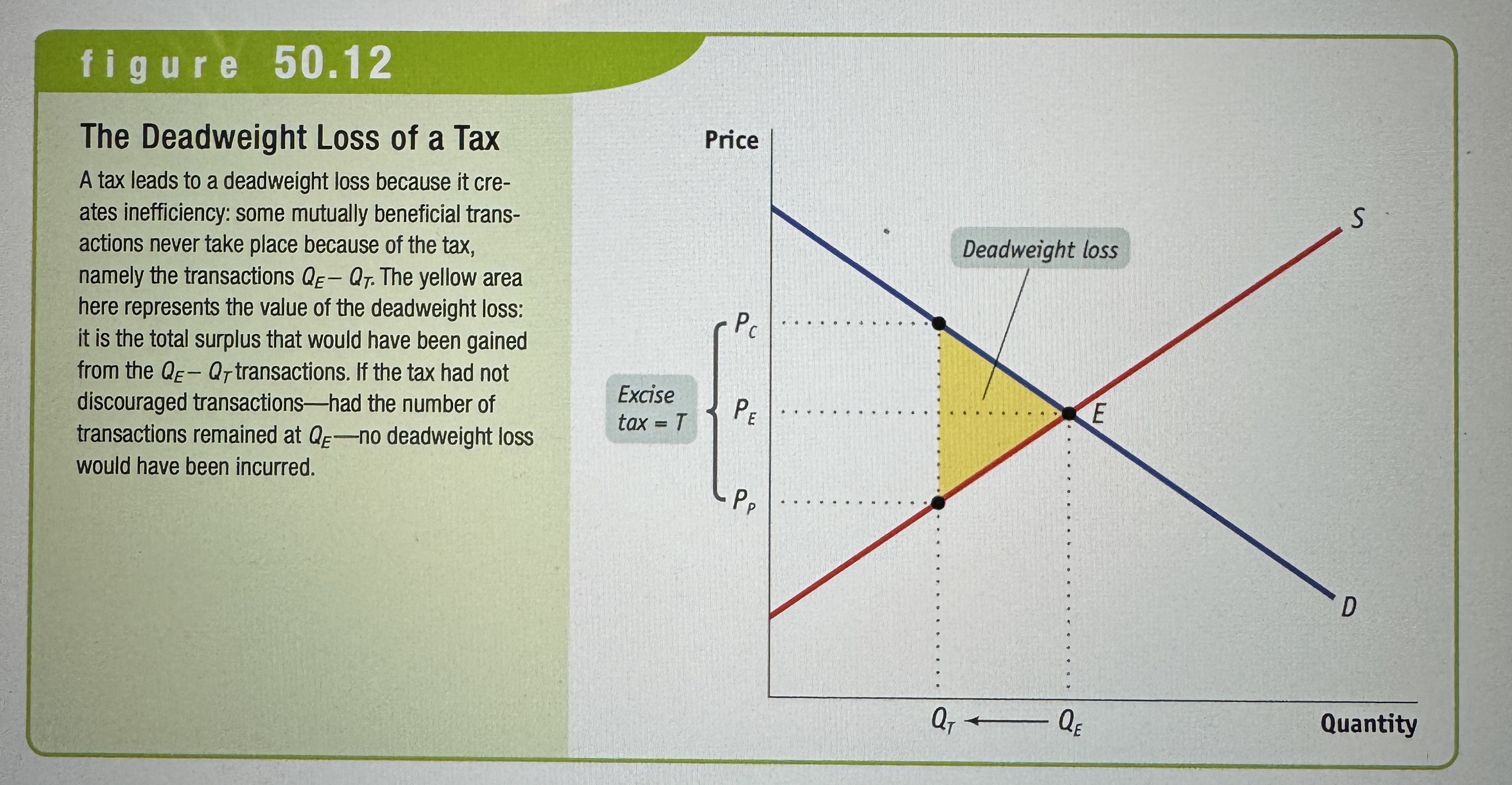
Administrative costs
The resources used by governments to collect the tax, and by taxpayers to pay or to invade it, over and above the amount collected.
Lump-Sum Tax
A tax of a fixed amount paid by all taxpayers.
Utility
A measure of personal satisfaction
Util
A unit of utility
Cassie's Total Utility and Marginal Utility
Ex.
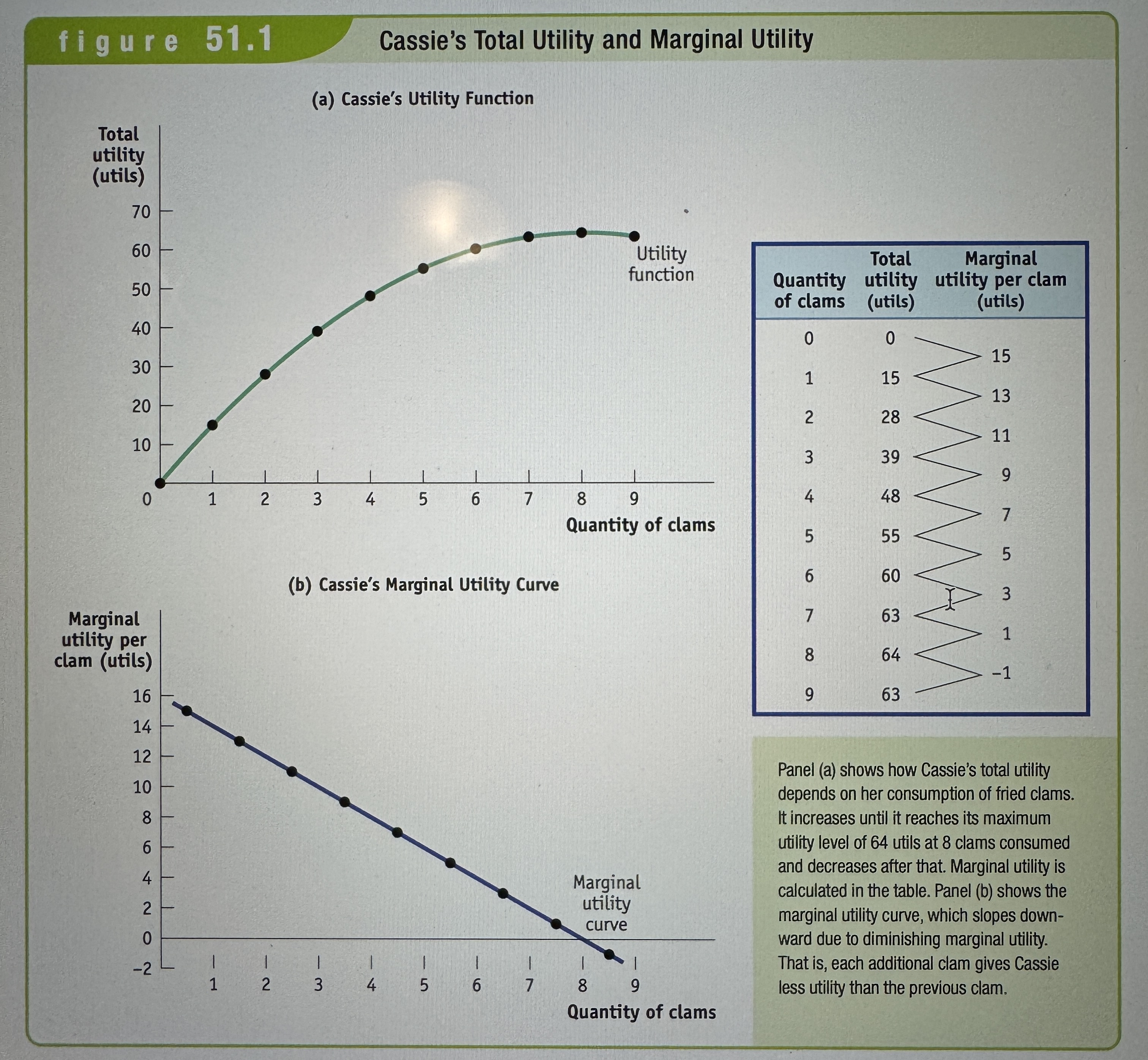
Marginal utility
The marginal utility of a good or service is the change in total utility generated by consuming one additional unit of that good or service. The marginal utility curve shows marginal utility depends on the quantity of a good or service consumed.
The principle of diminishing marginal utility
States that each successive unit of a good or service consumed adds less to total utility then does the previous unit.
Budget Constraint
Limits the cost of a consumers consumption bundle to no more than the consumers income.
Consumption possibilities
Is the set of all consumption bundles that are affordable, given the consumers income and prevailing prices.
Budget line
Shows the consumption bundles available to a consumer who spends all of his or her income.
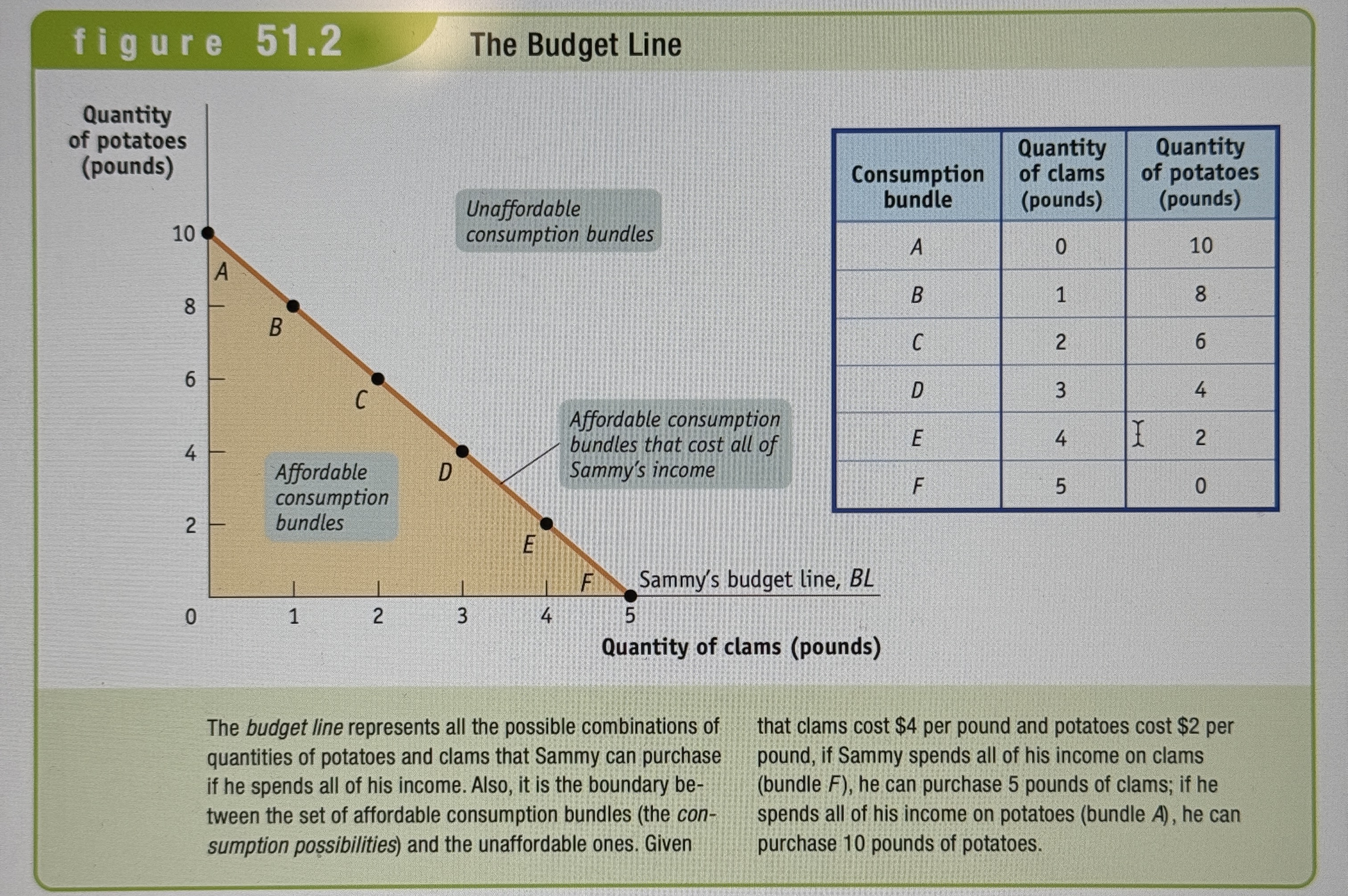
The optimal consumption bundle
The consumption bundle that maximizes the consumers total utility given his or her budget constraint.
Sammy's Utility from Clam and Potato Consumption
Ex.
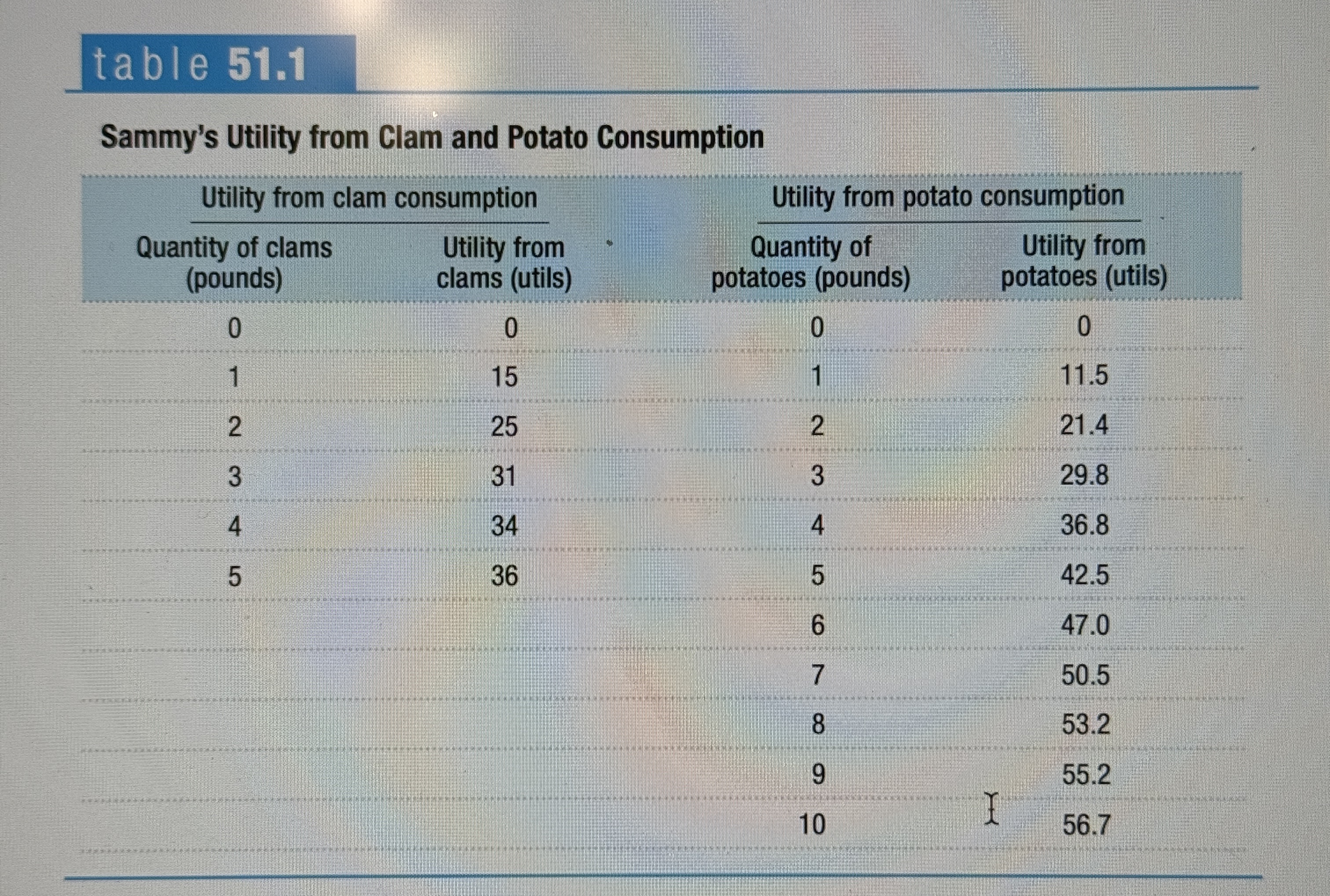
Sammy's Budget and Total Utility
Ex.
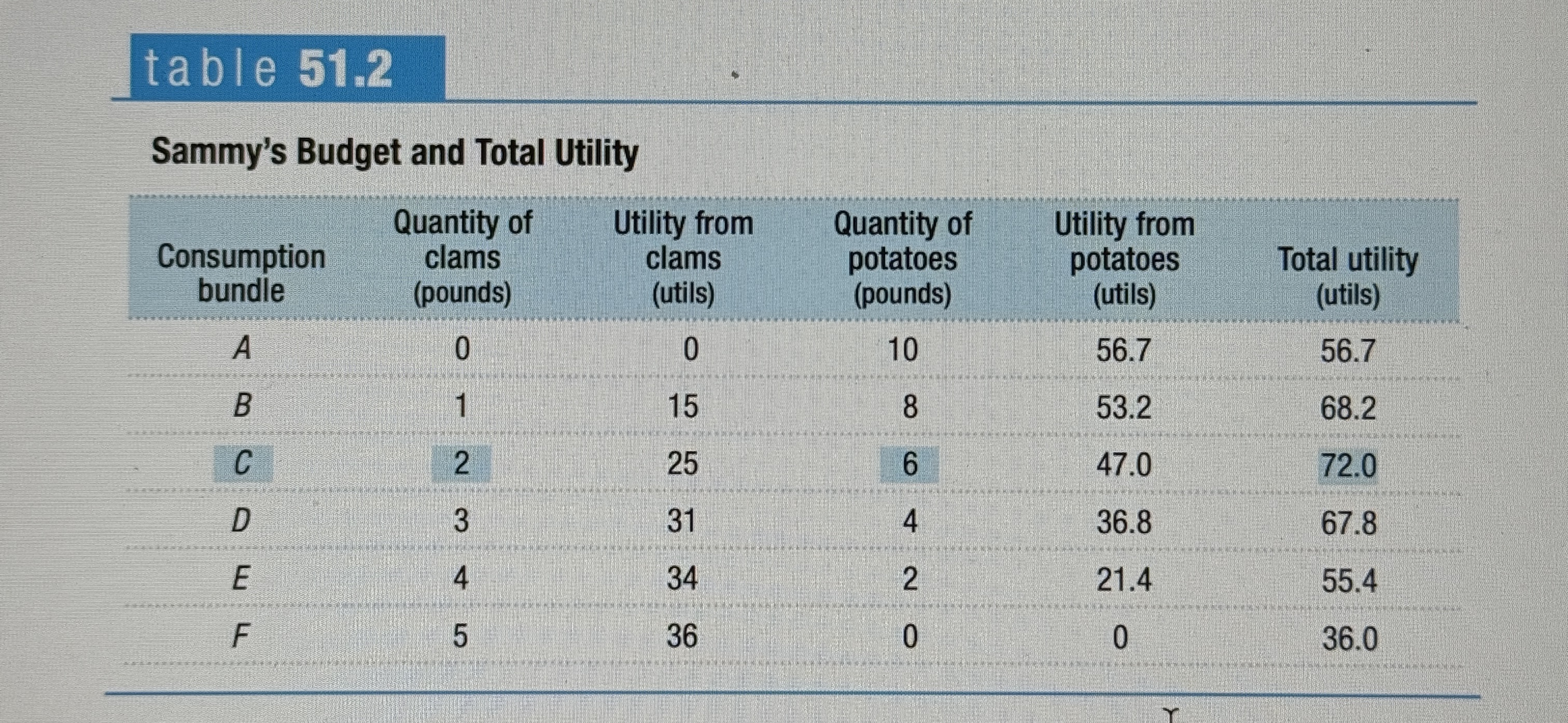
Optimal Consumption Bundle
Ex.
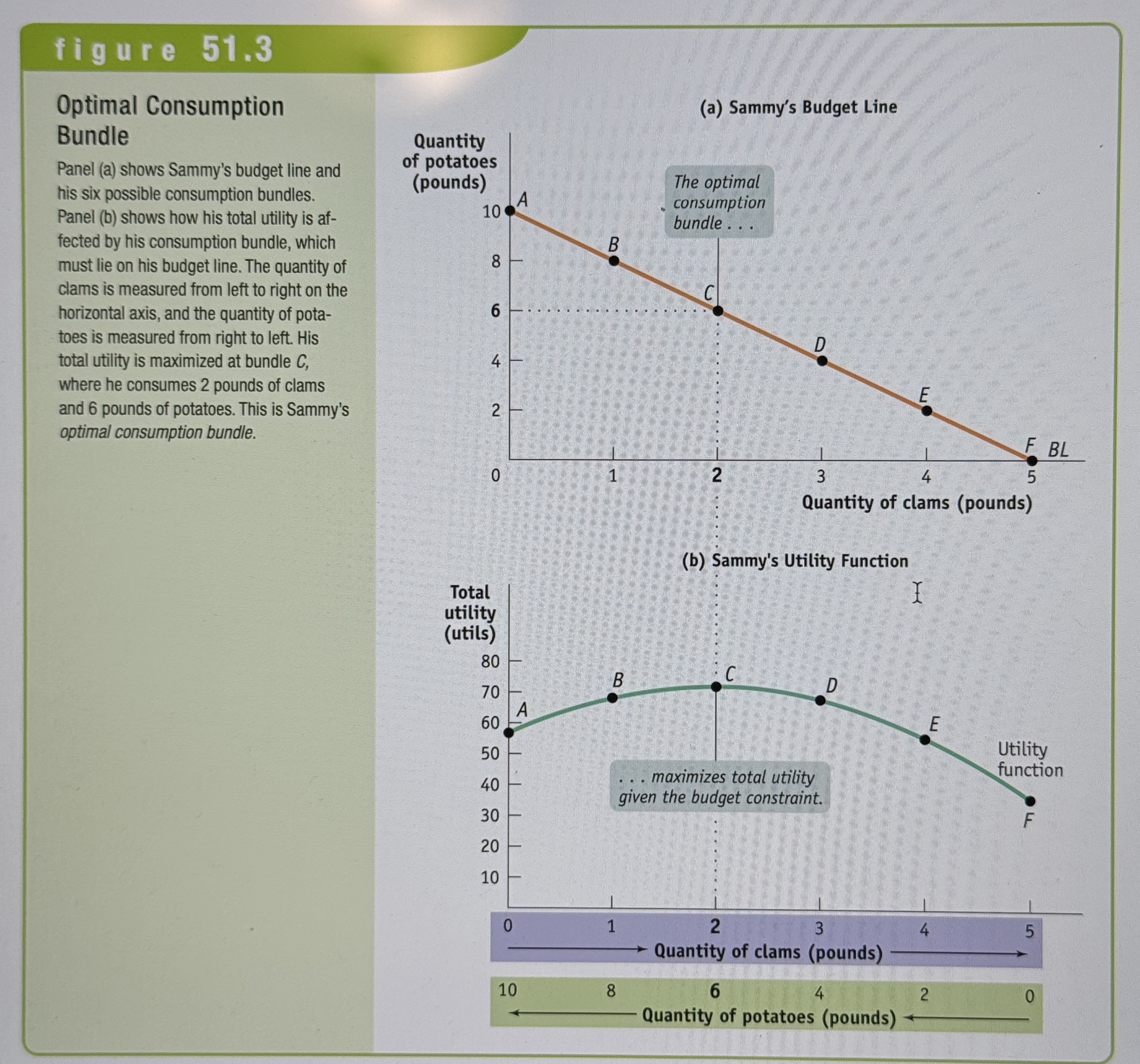
Marginal Utility Per Dollar
The marginal utility per dollar spent on a good or service is the additional utility from spending one more dollar on that good service.
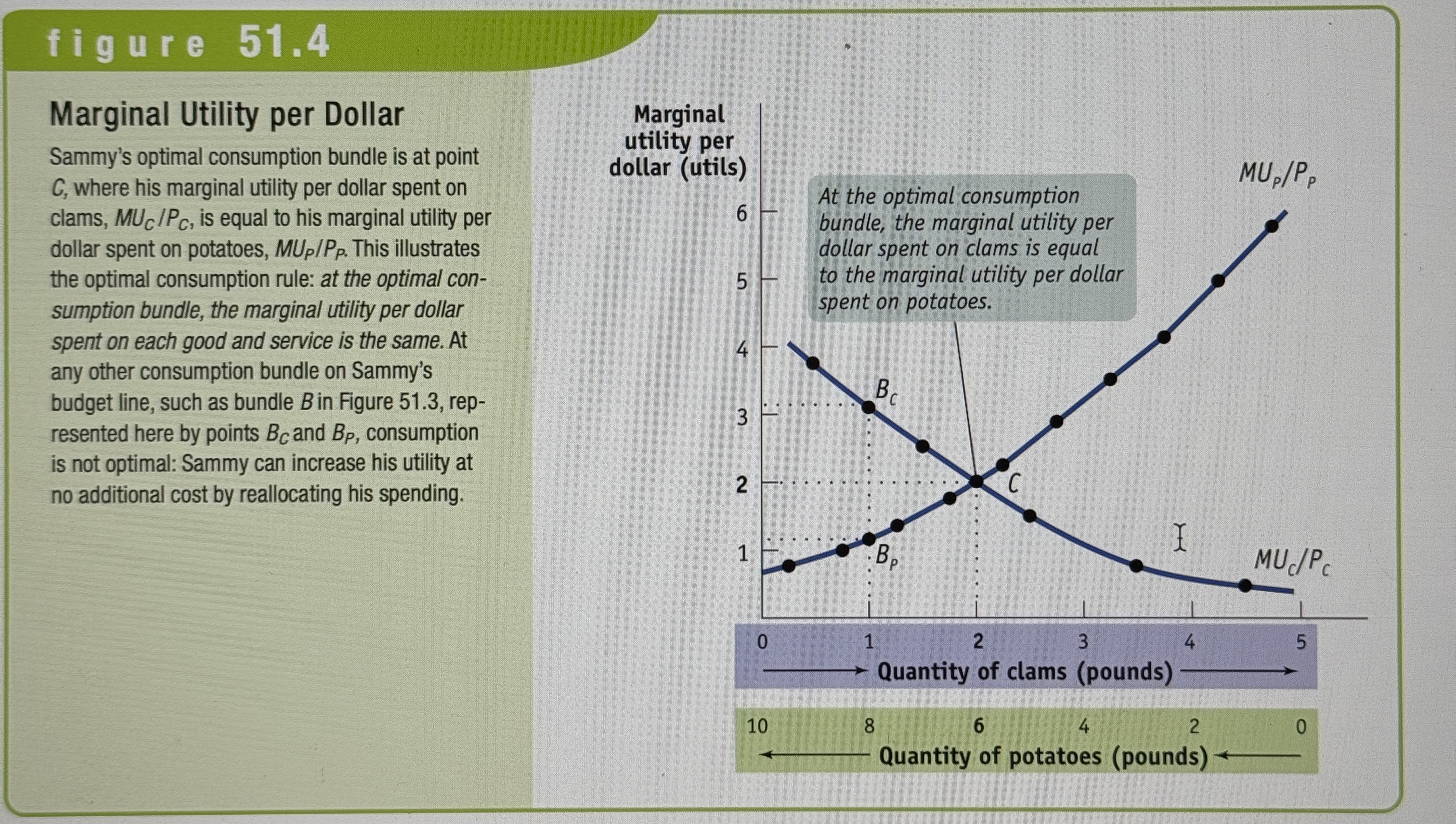
Sammy's Marginal Utility per Dollar
Ex.
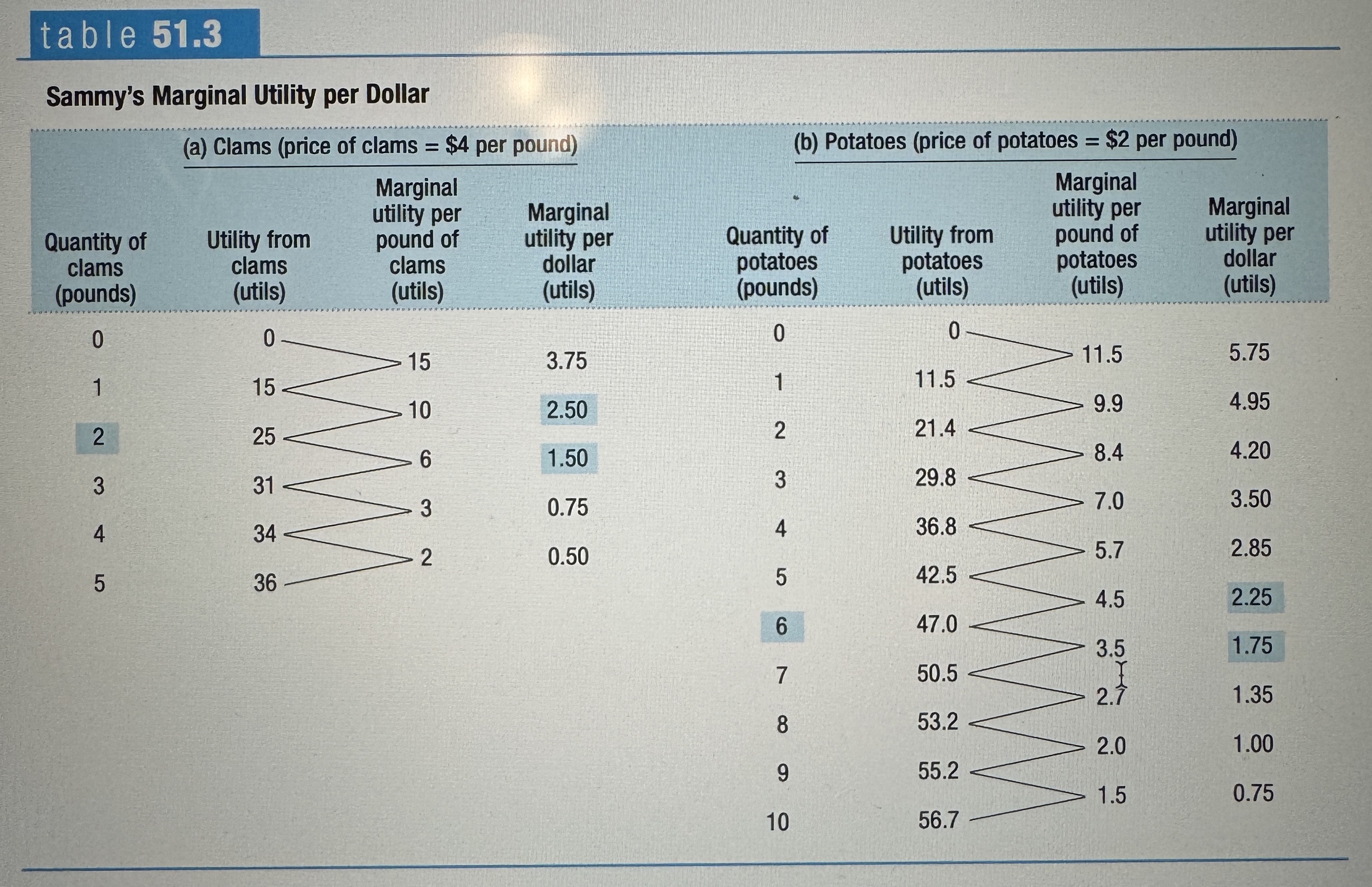
Optimal Consumption Rule
States that in order to maximize utility, a consumer must equate the marginal utility per dollar spent on each good service in the consumption bundle.
